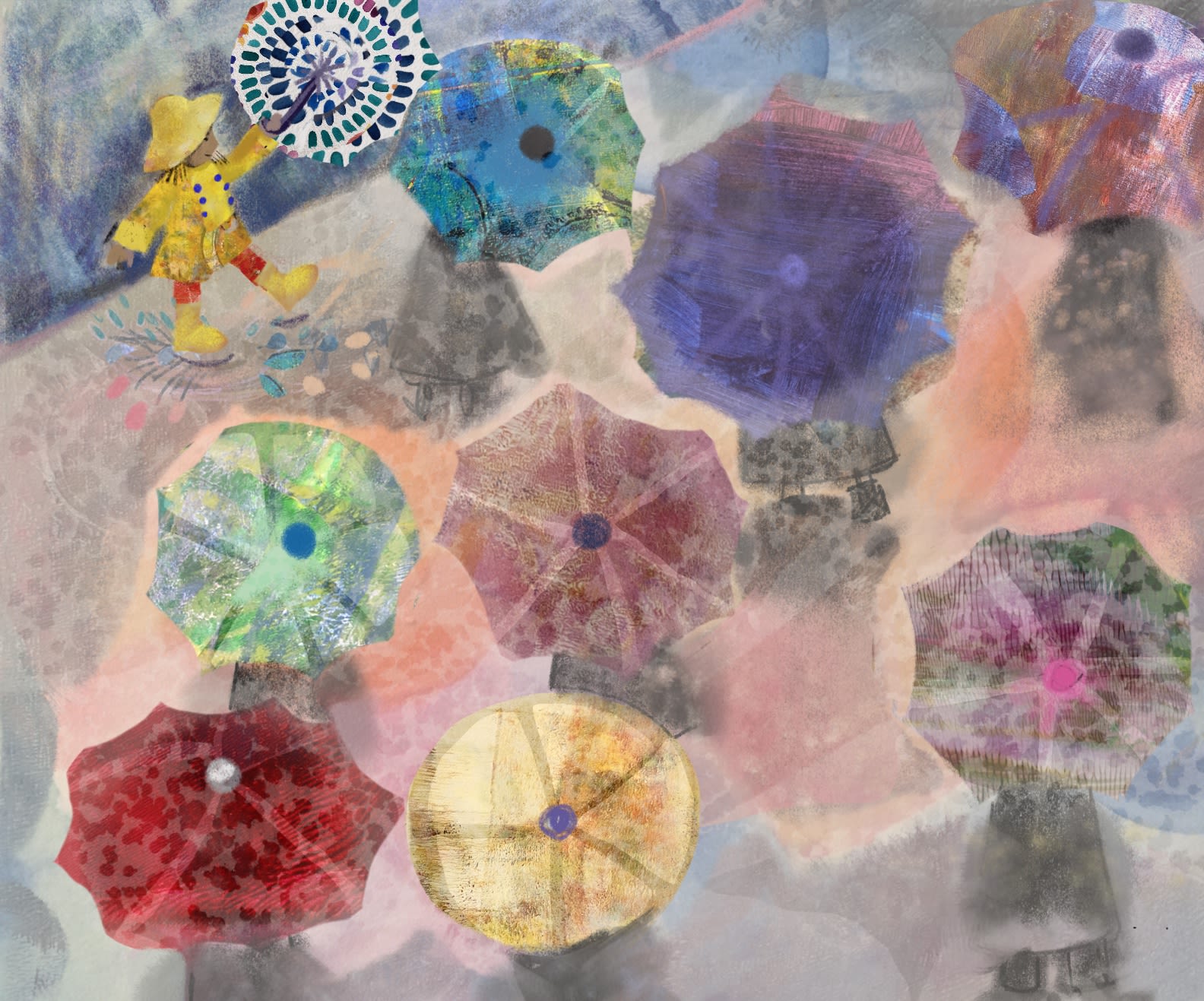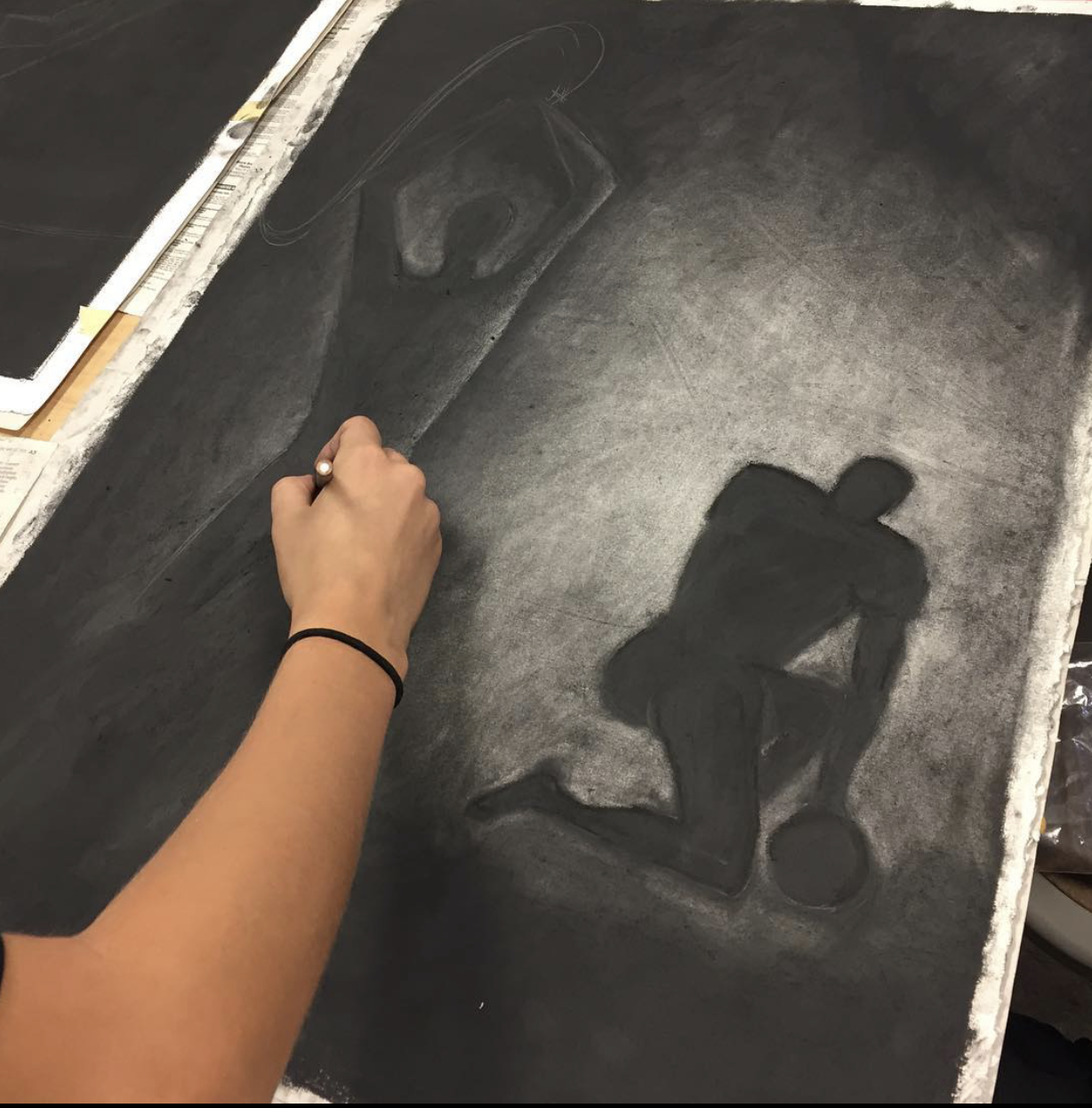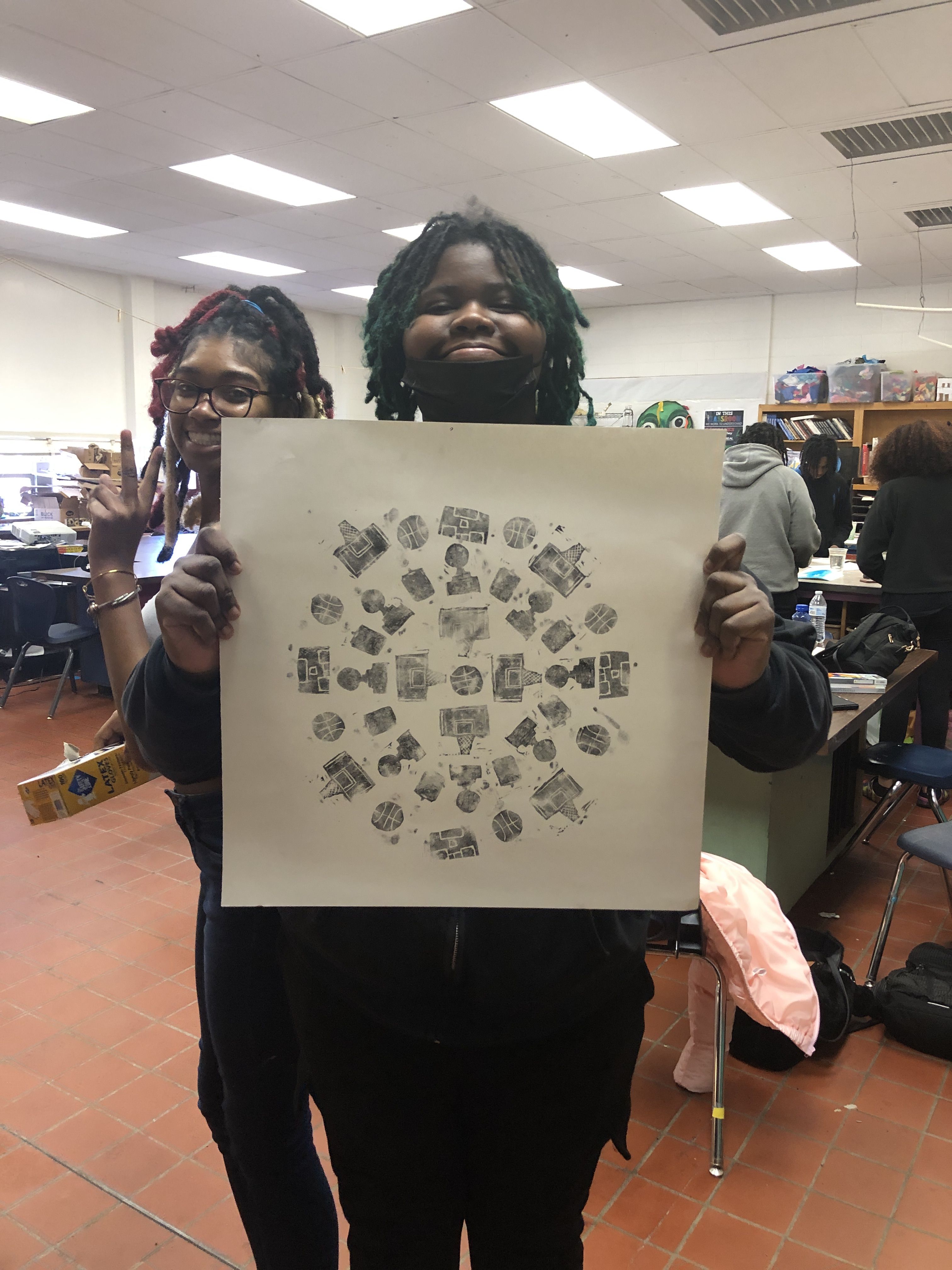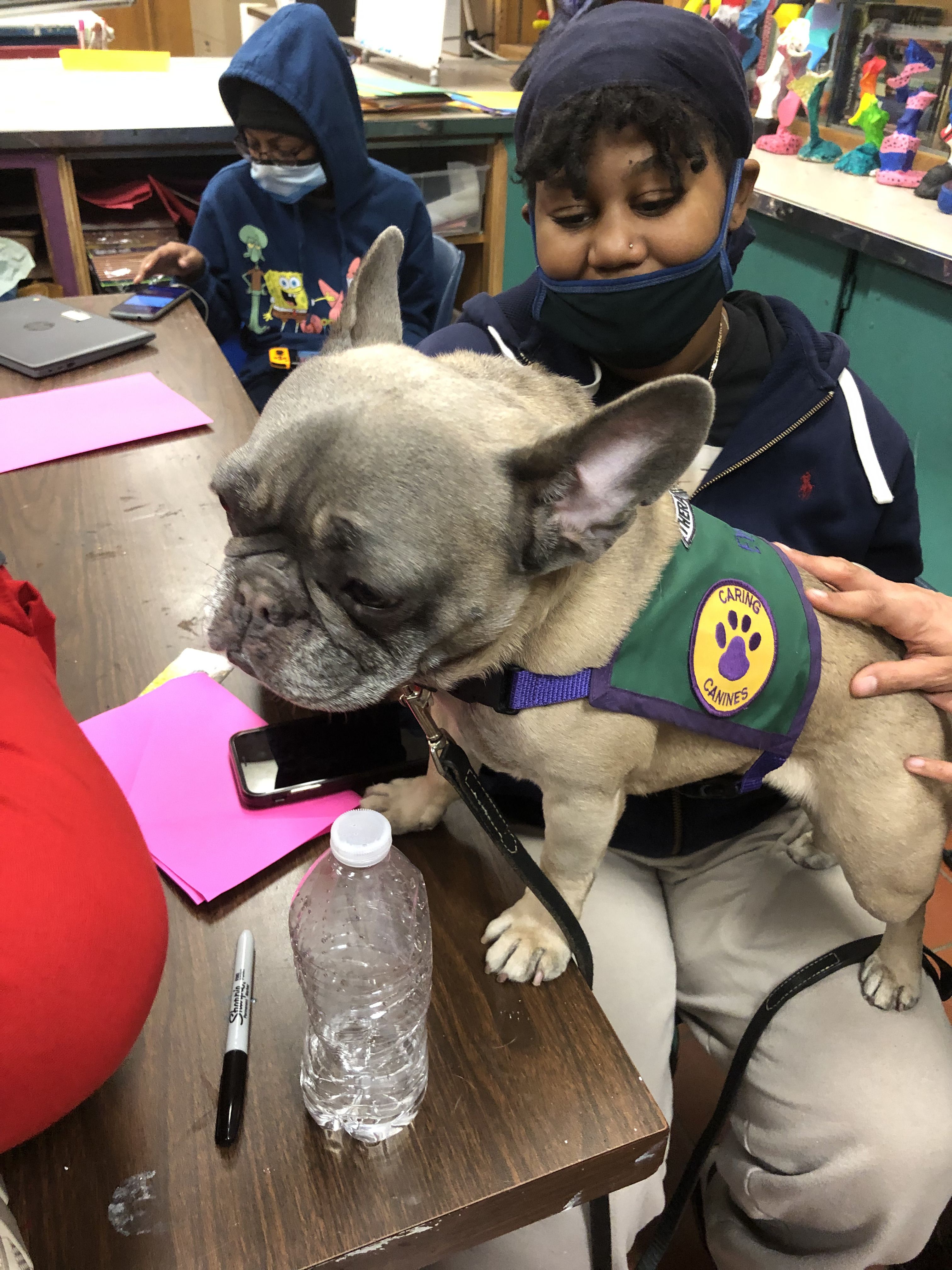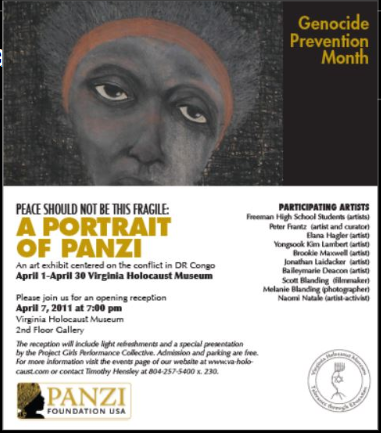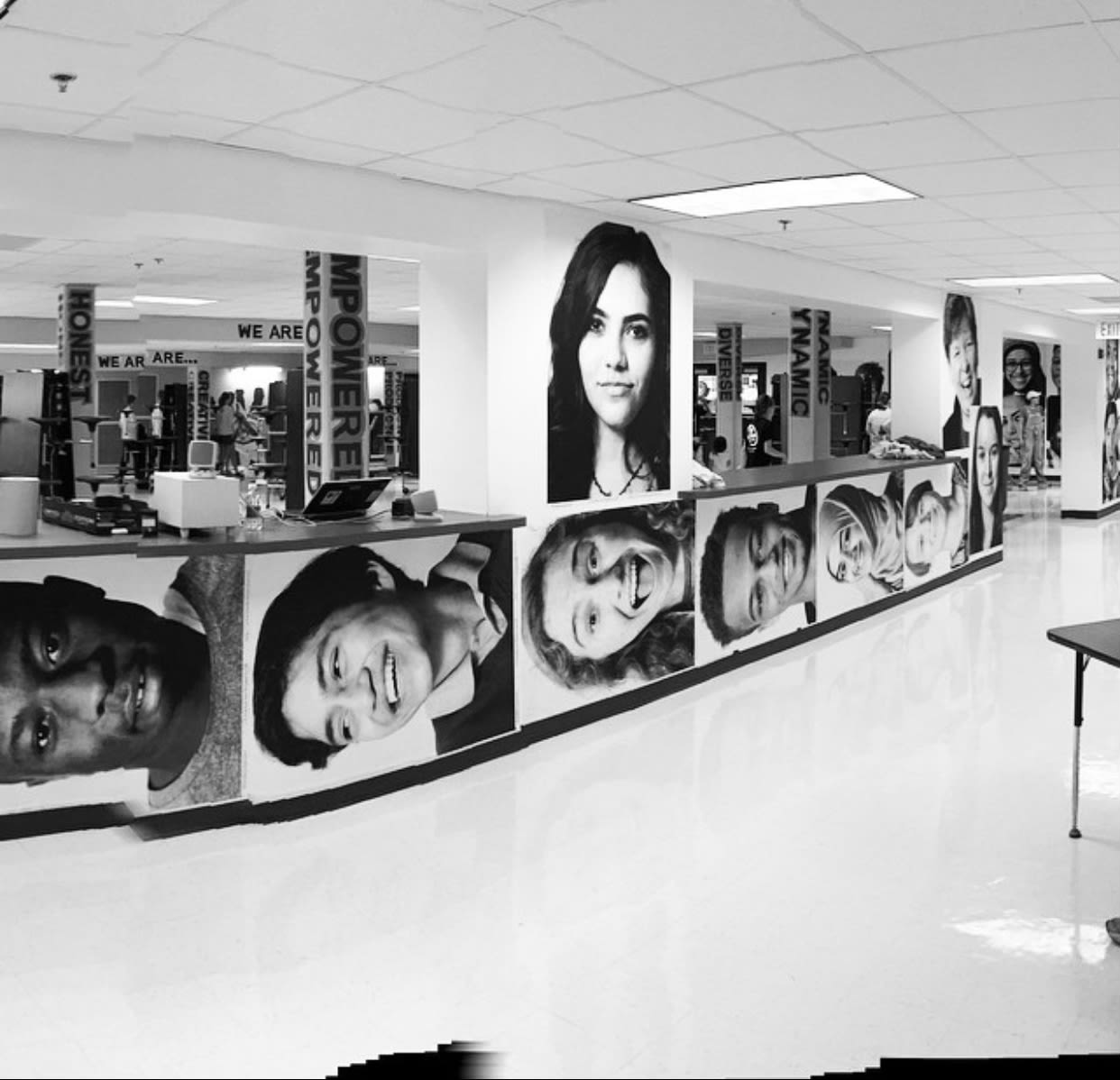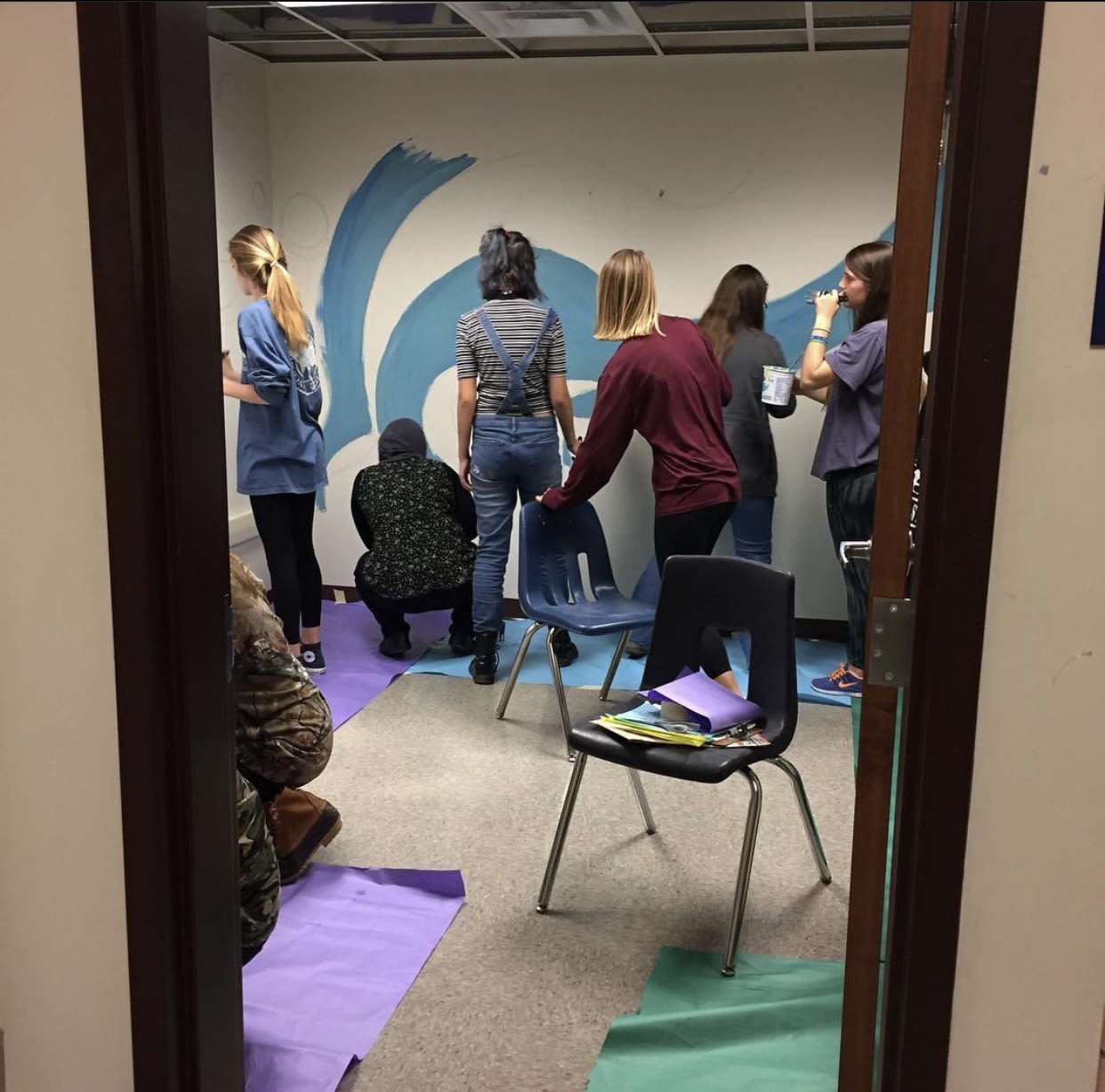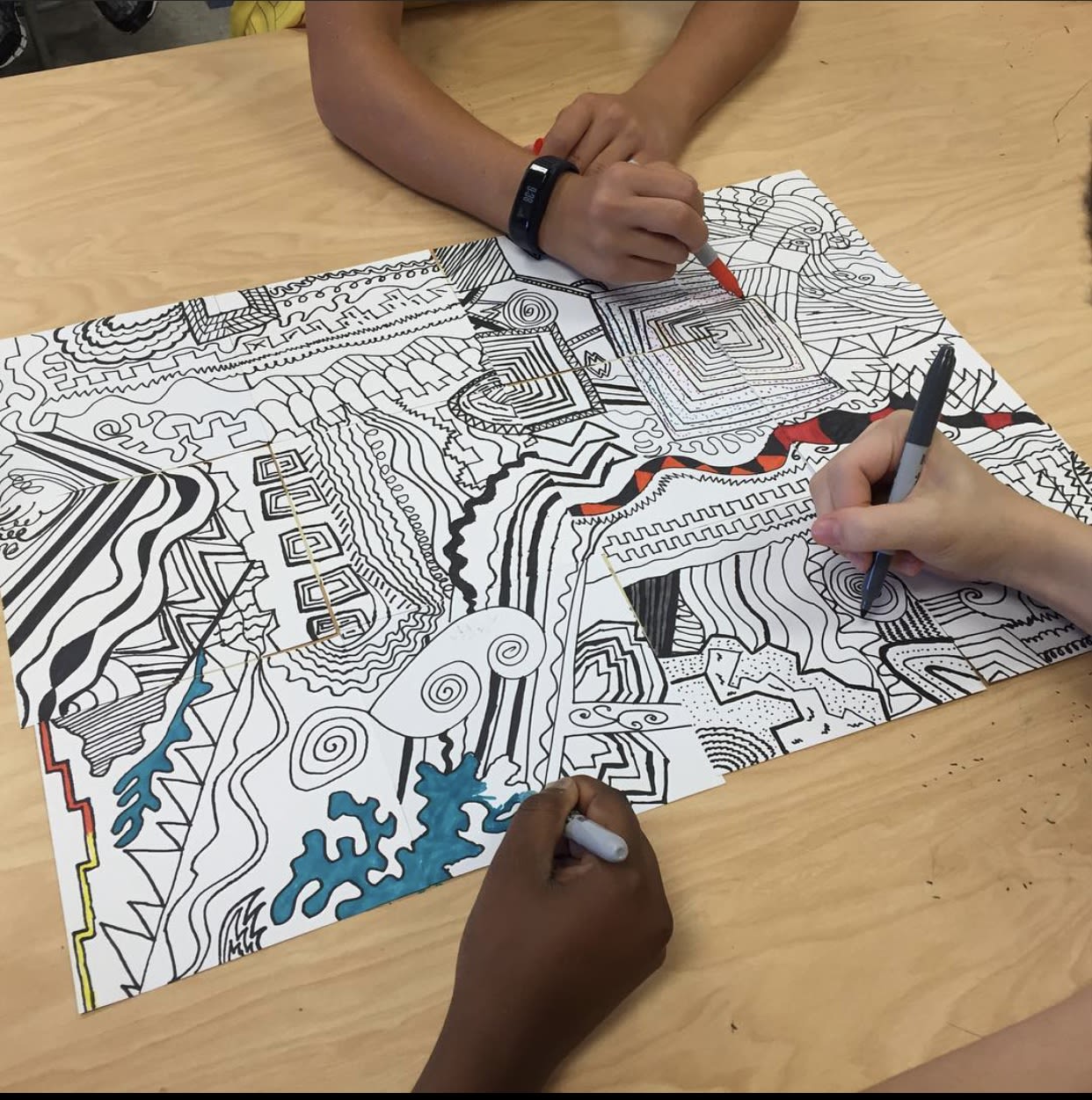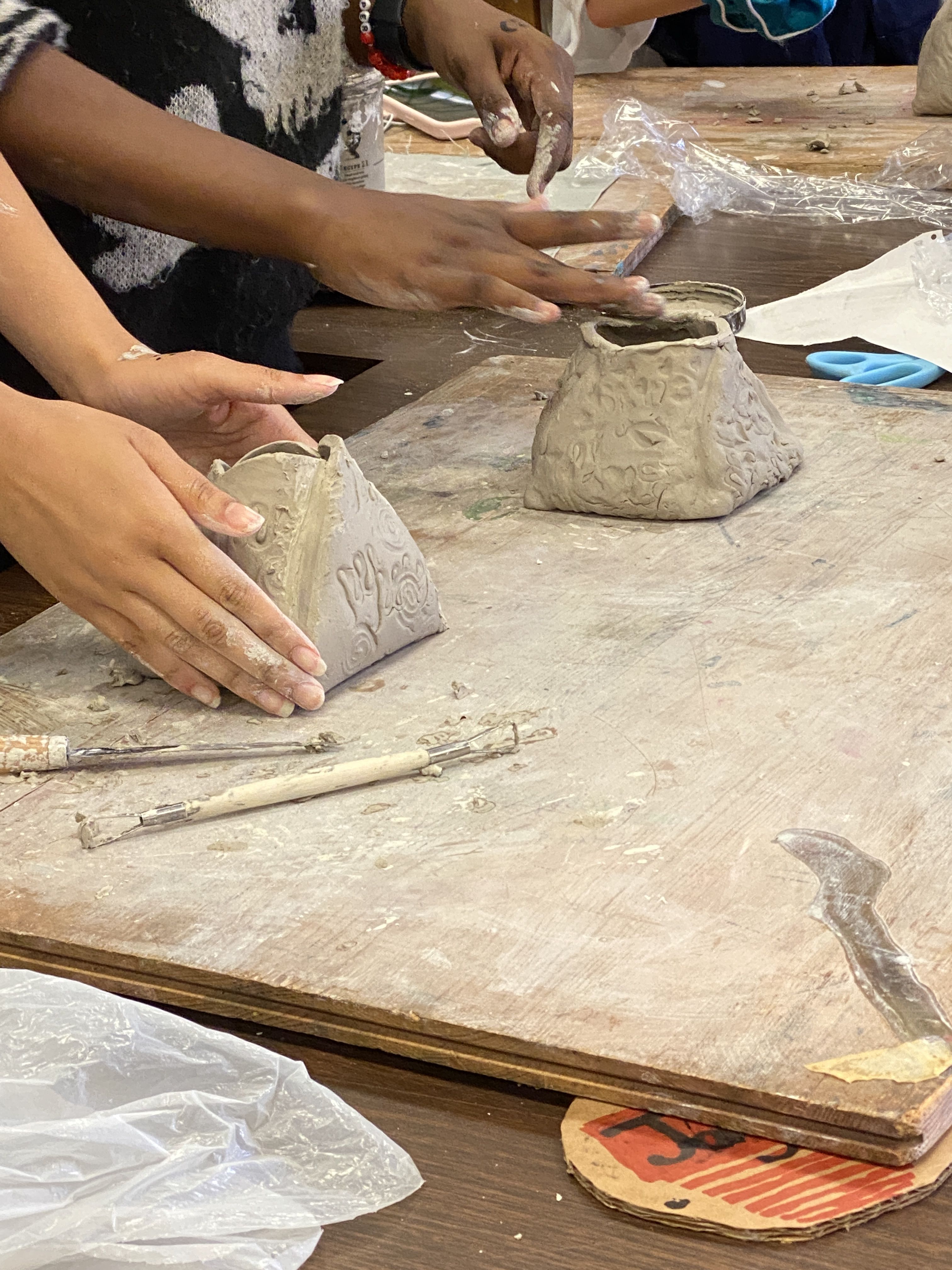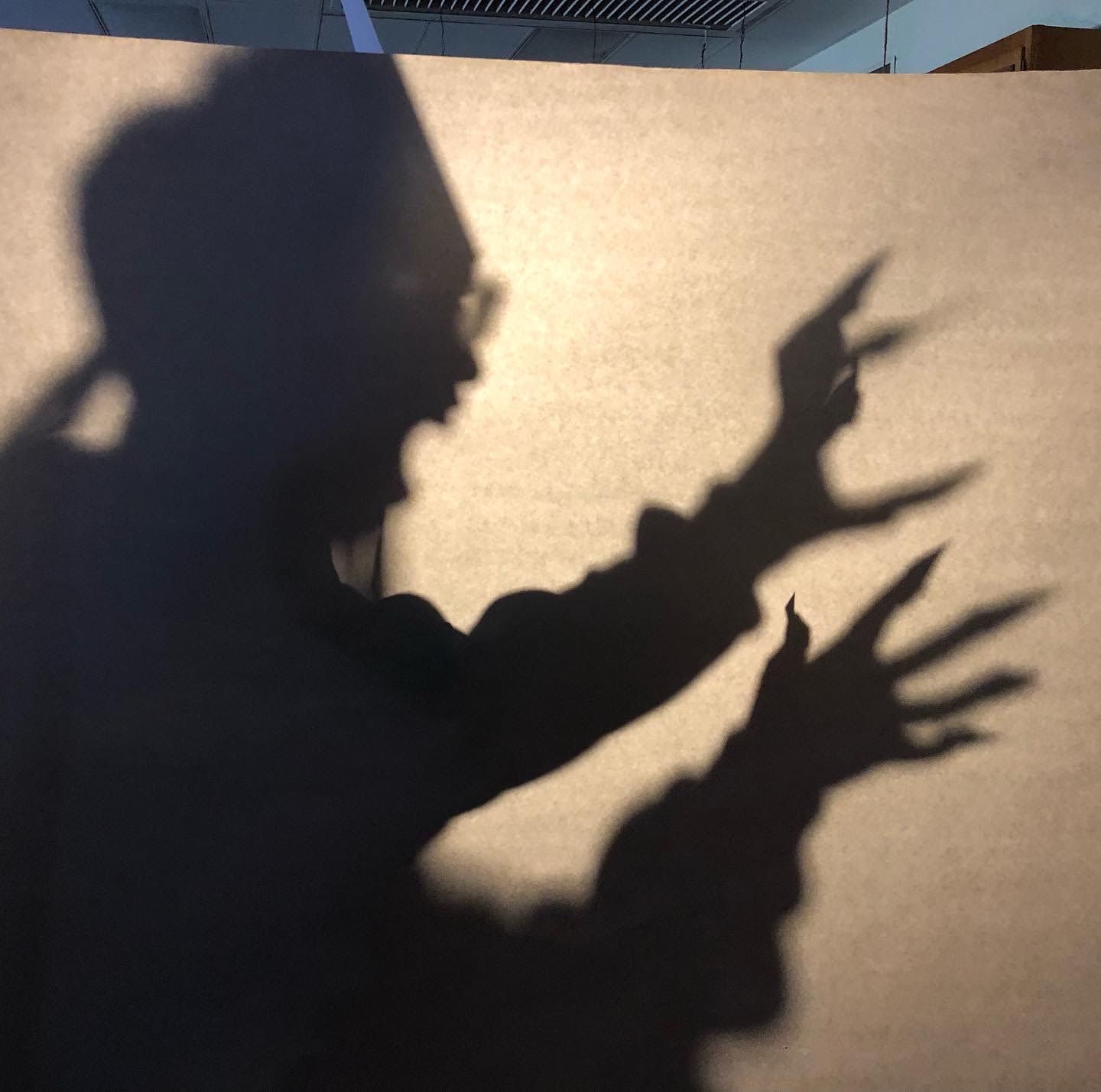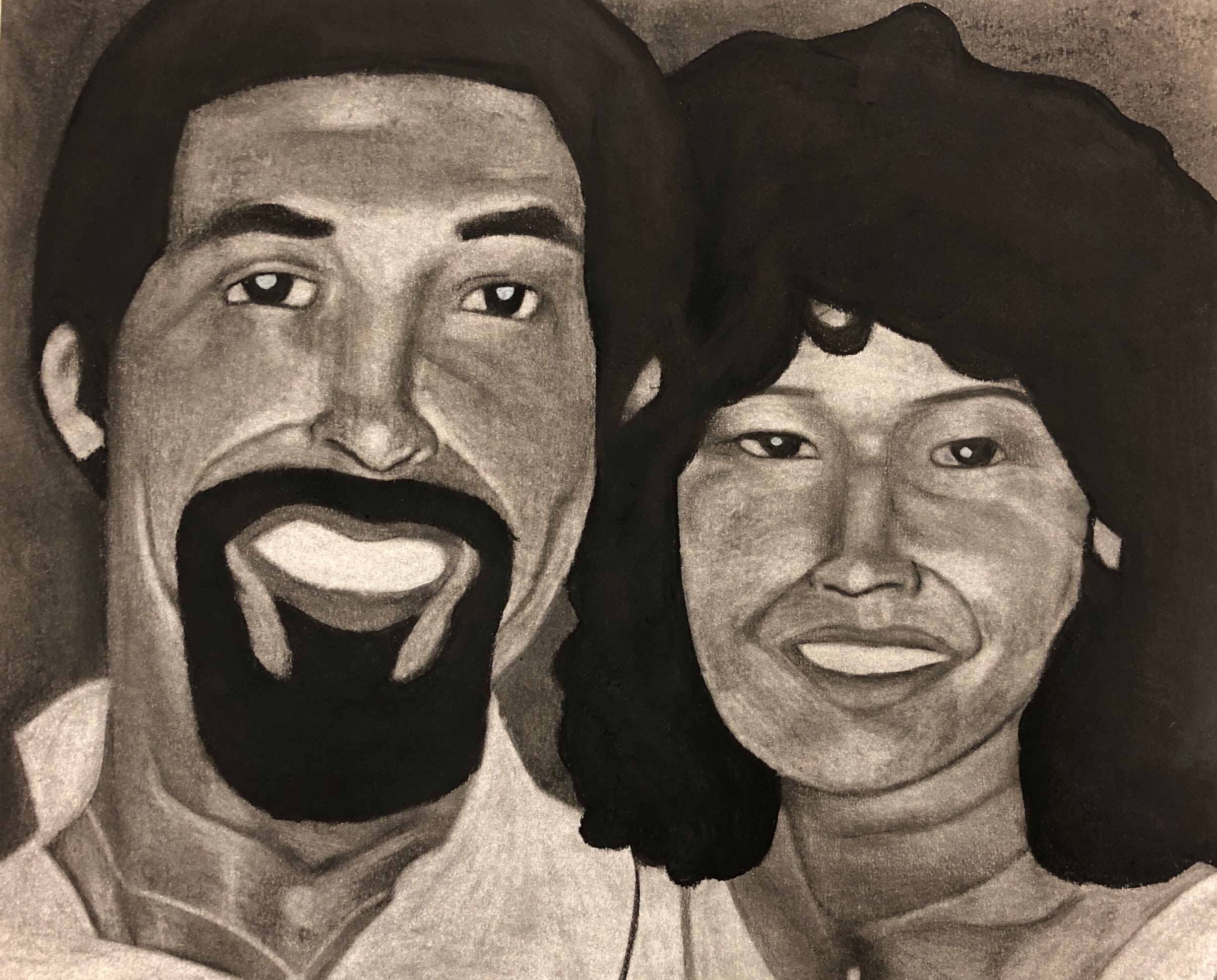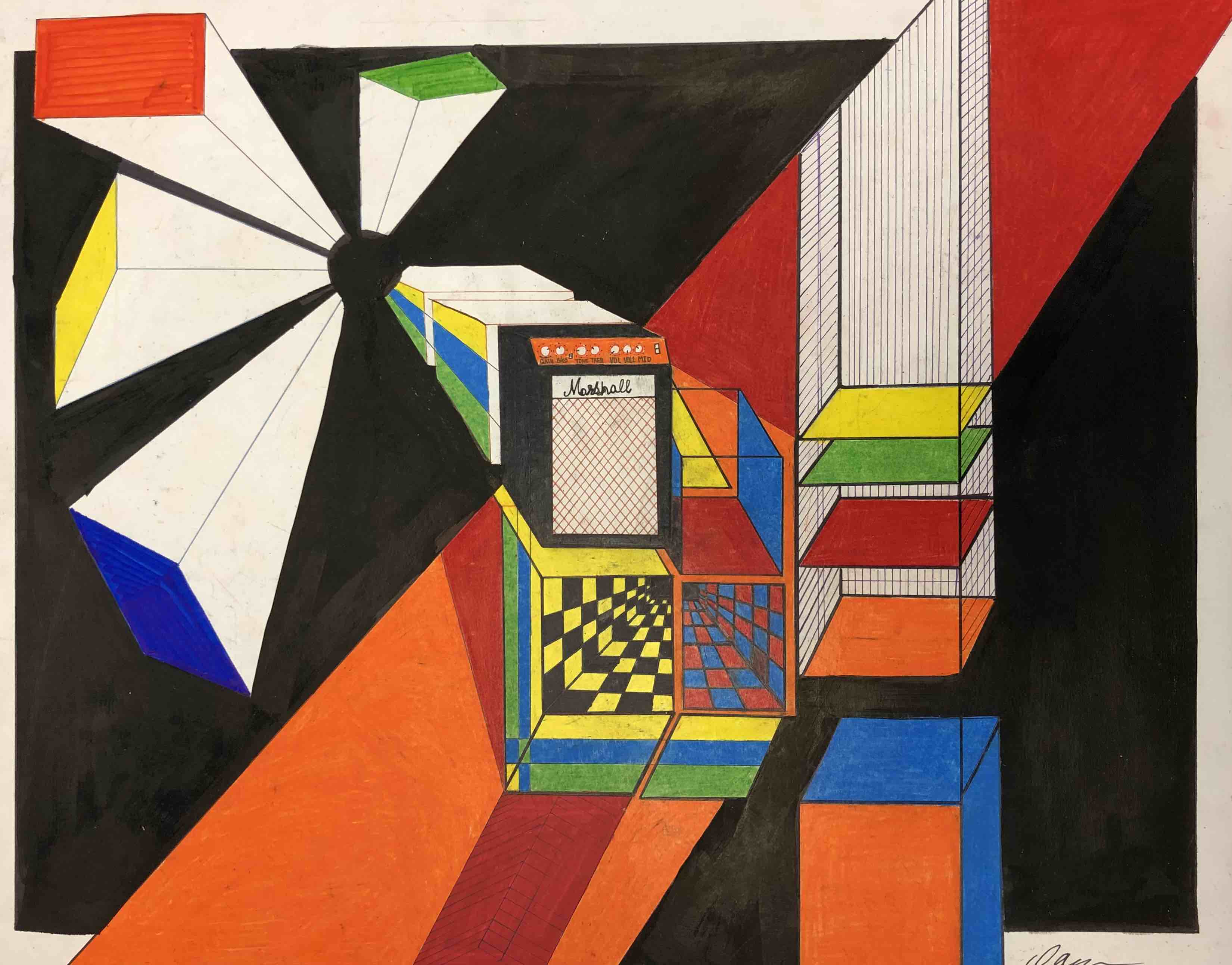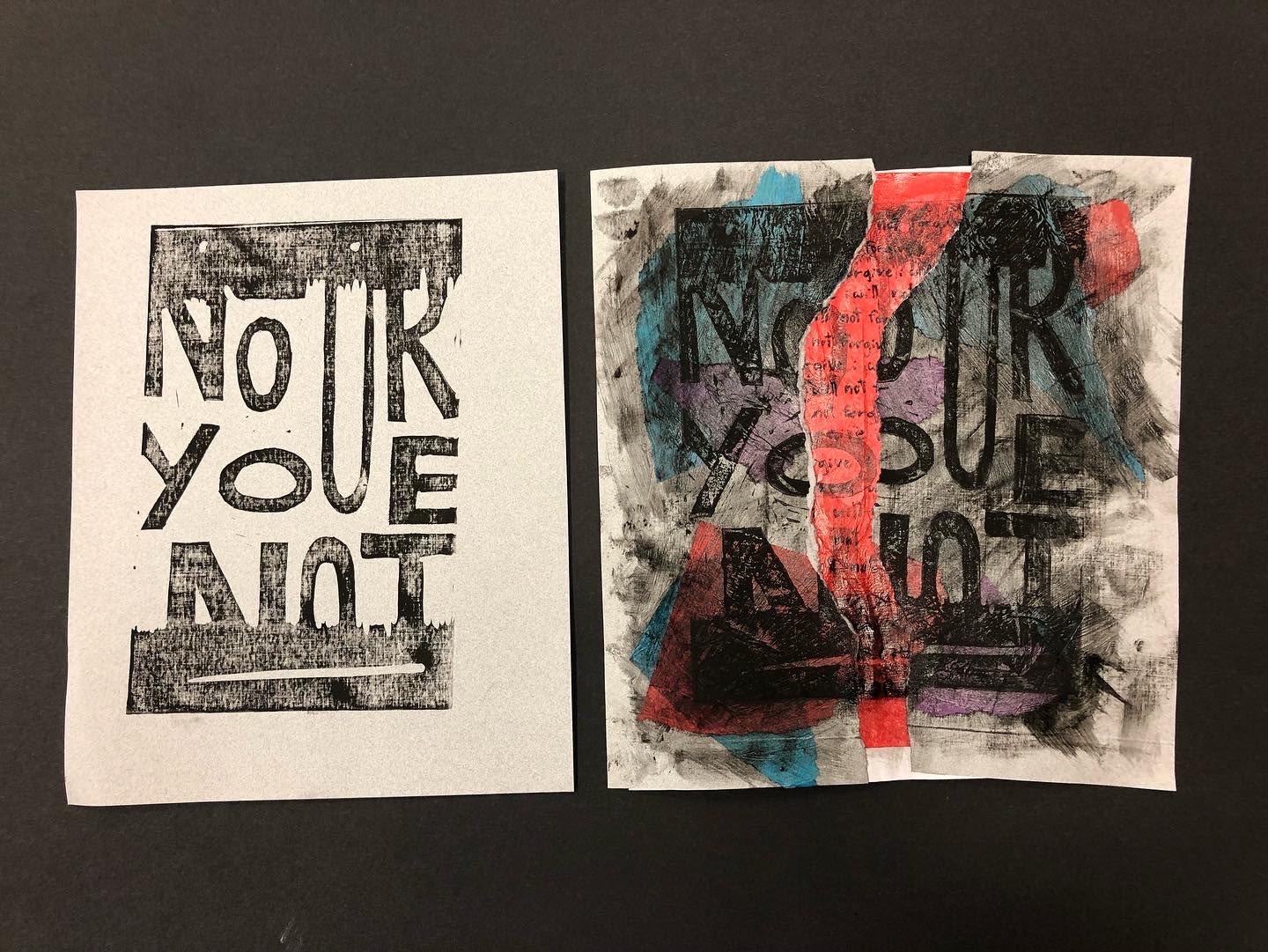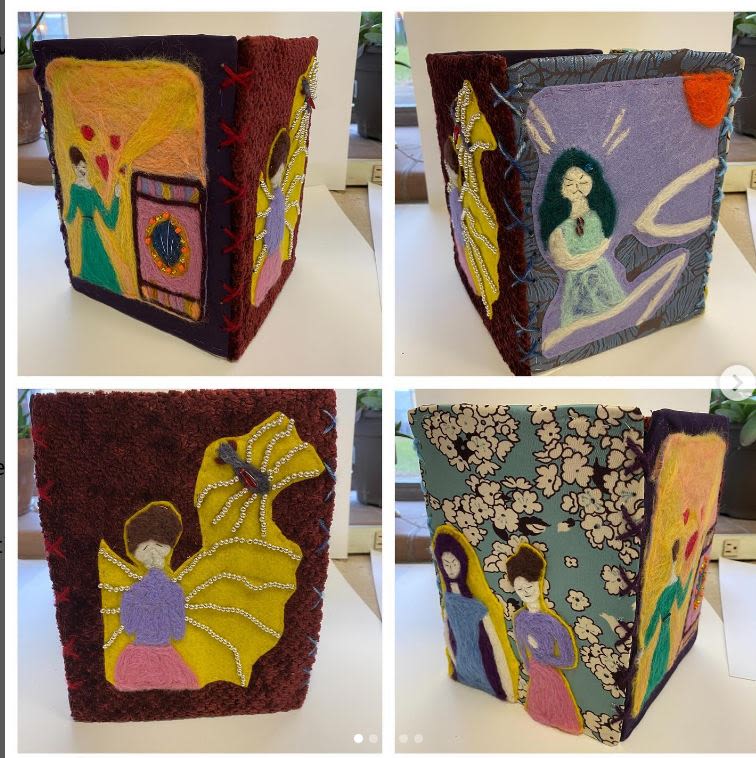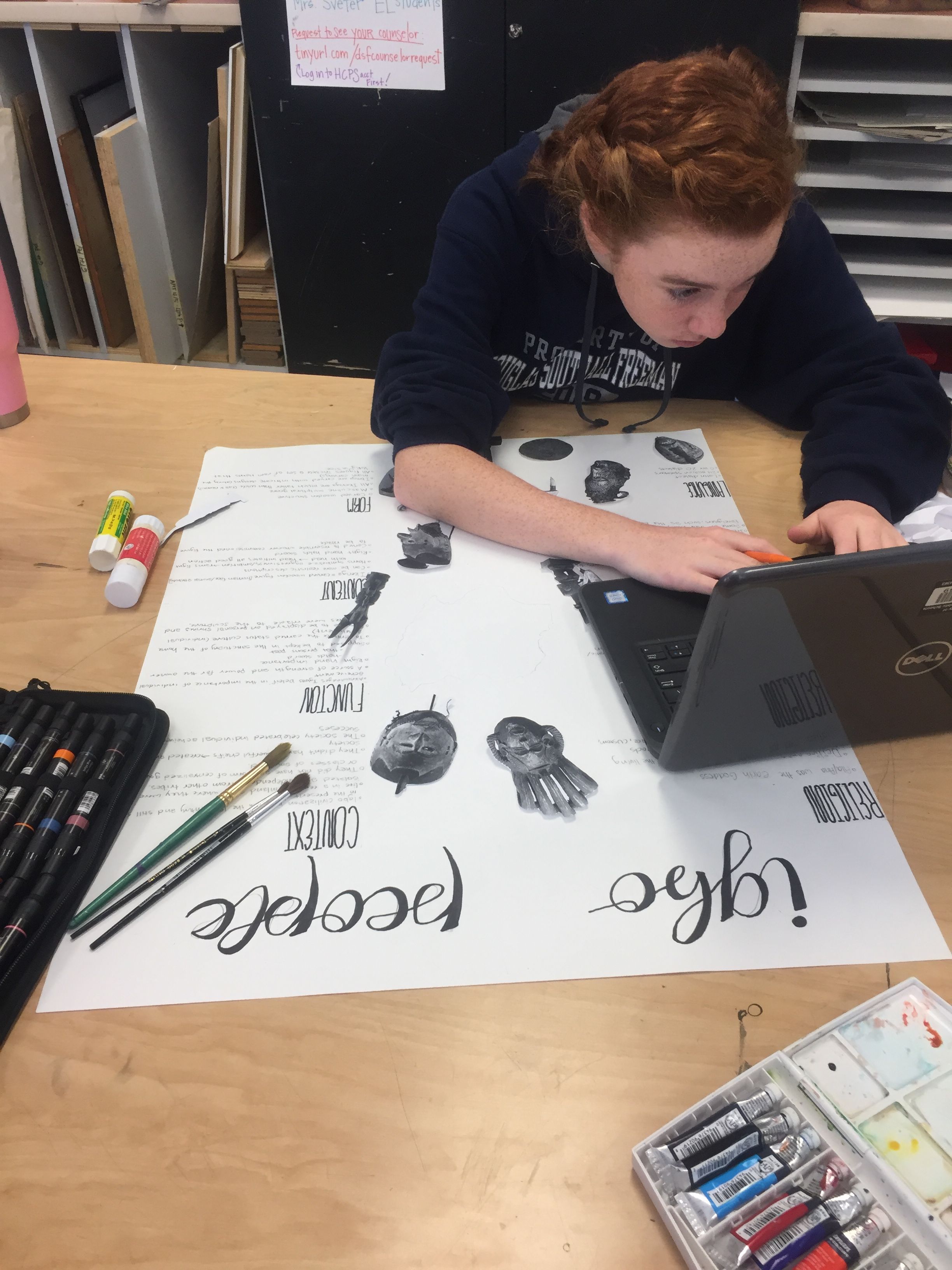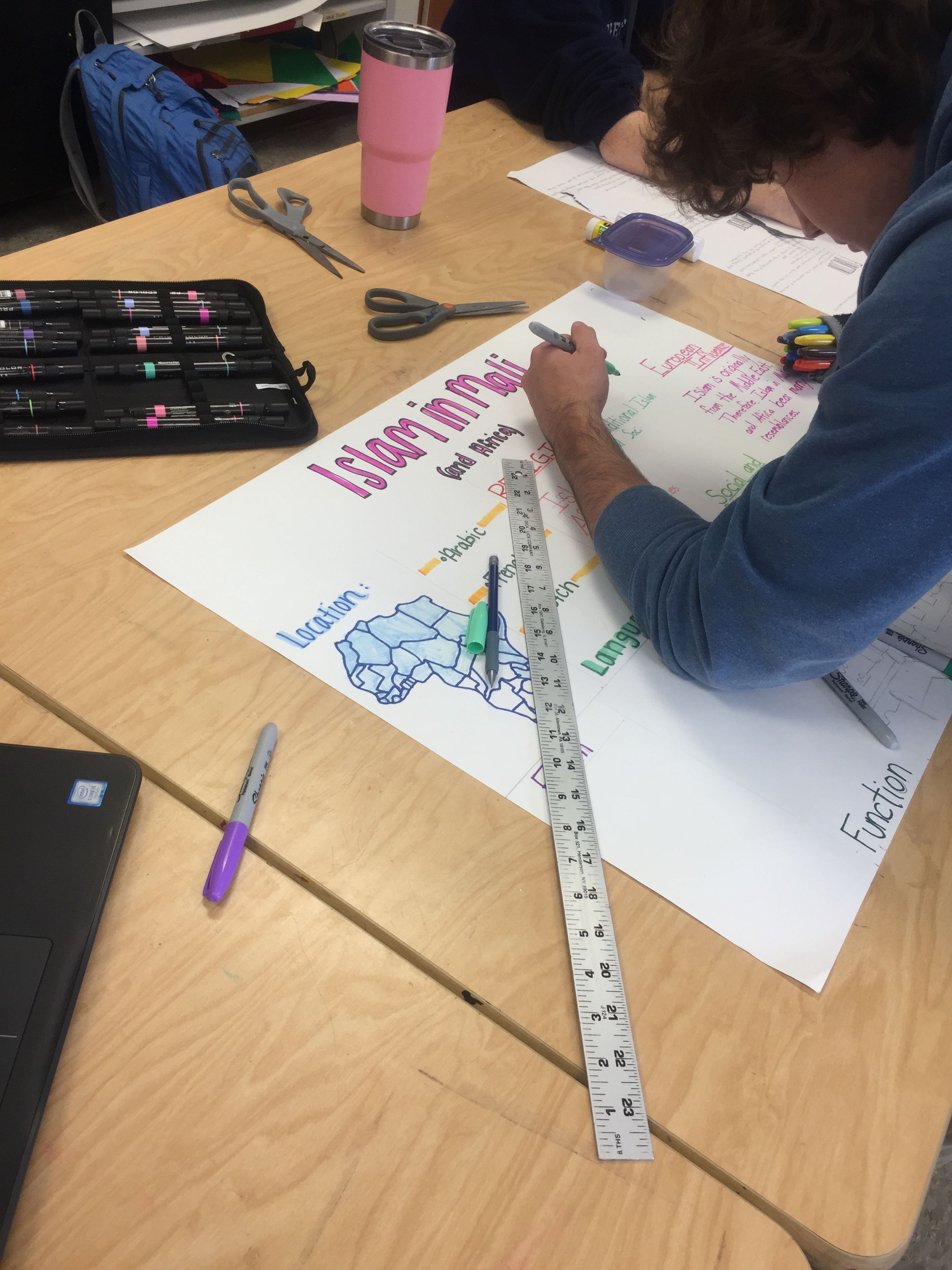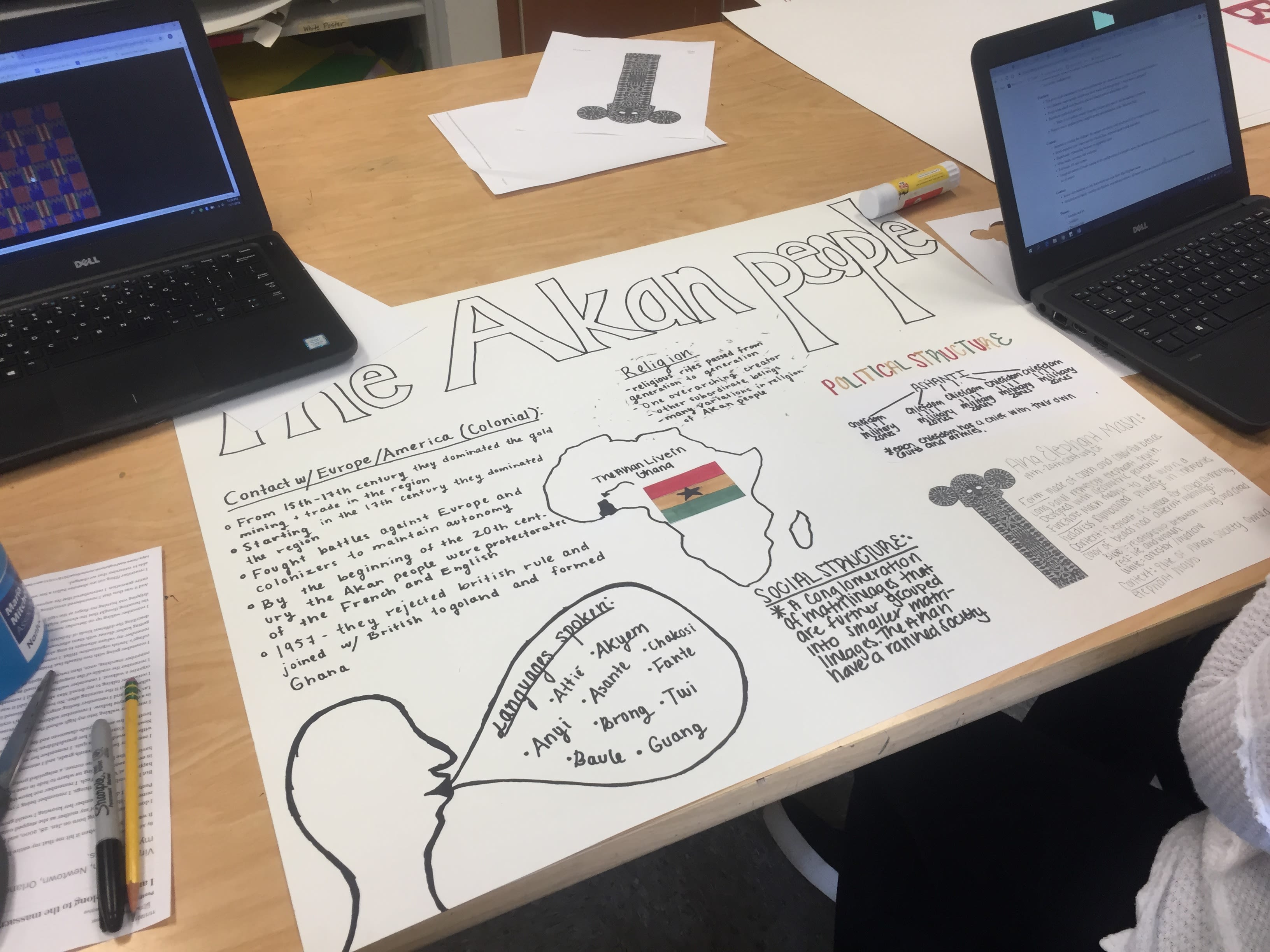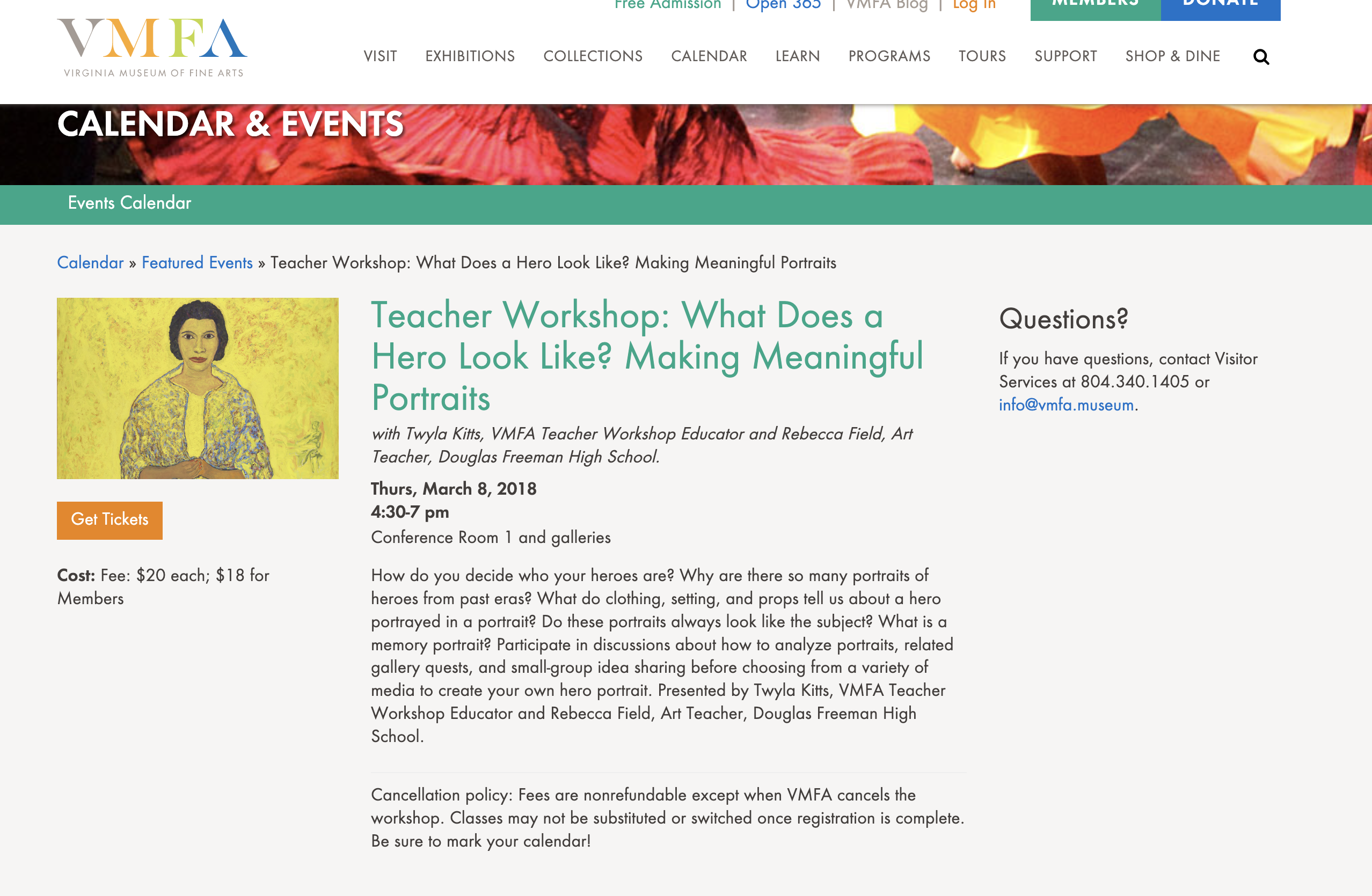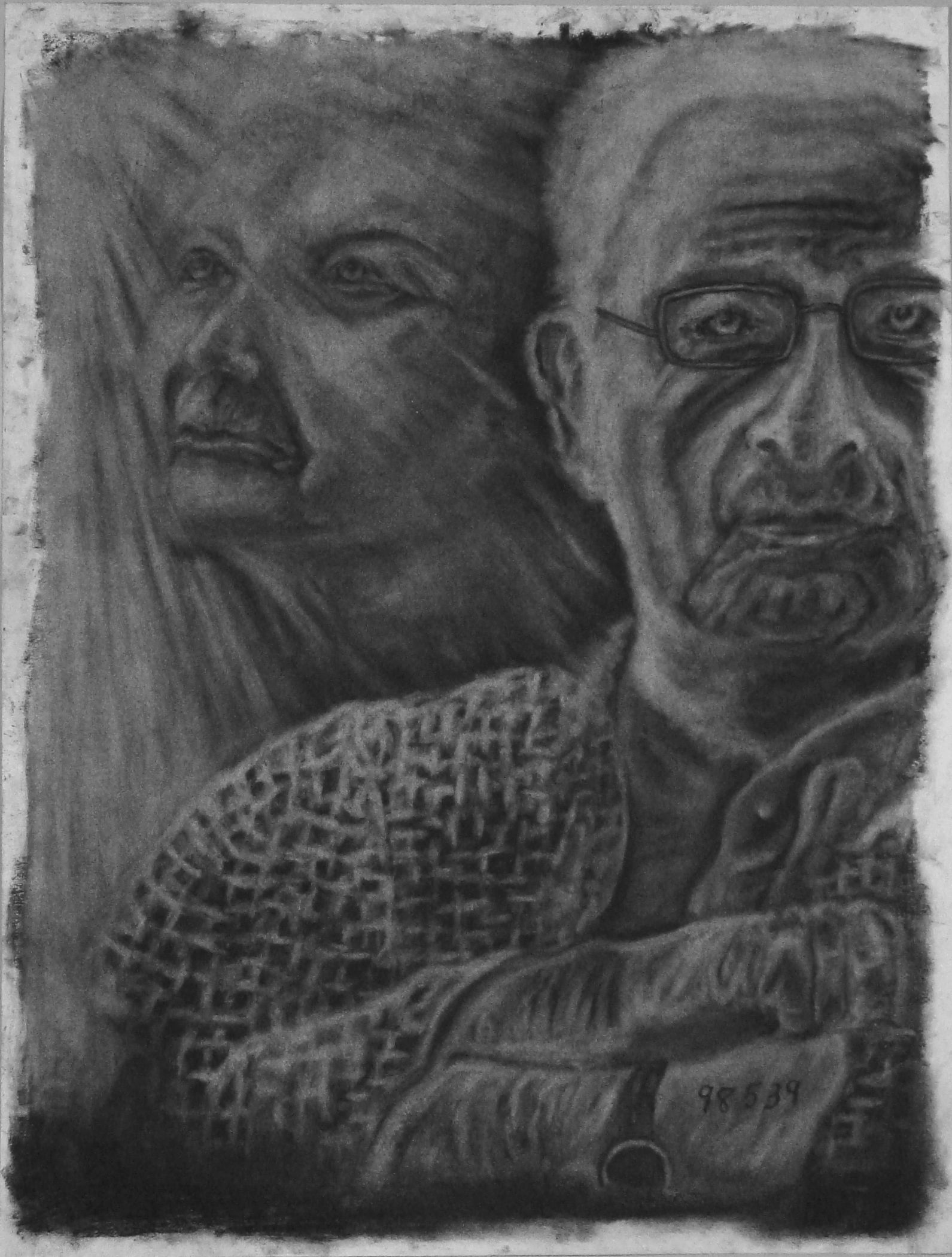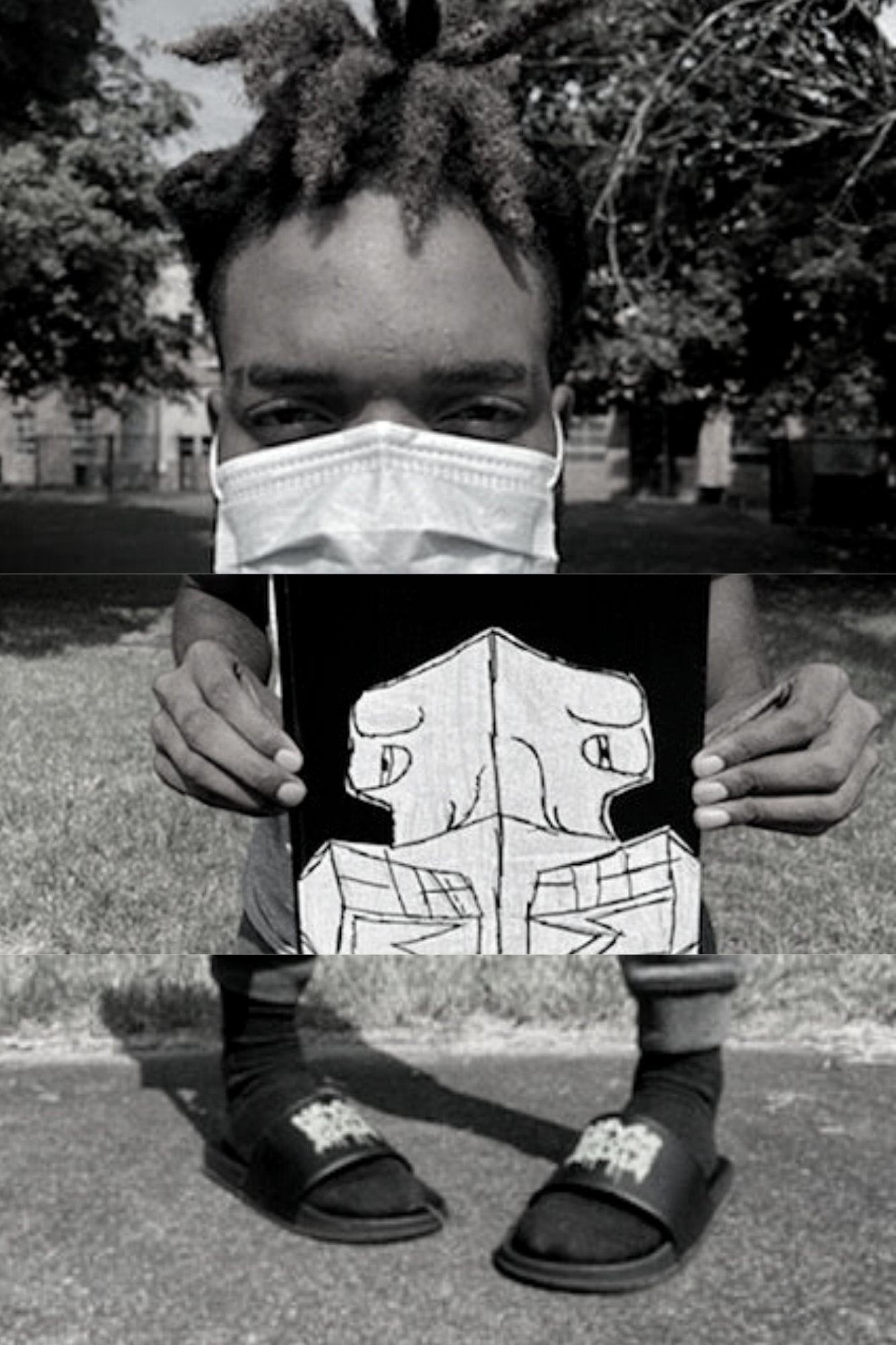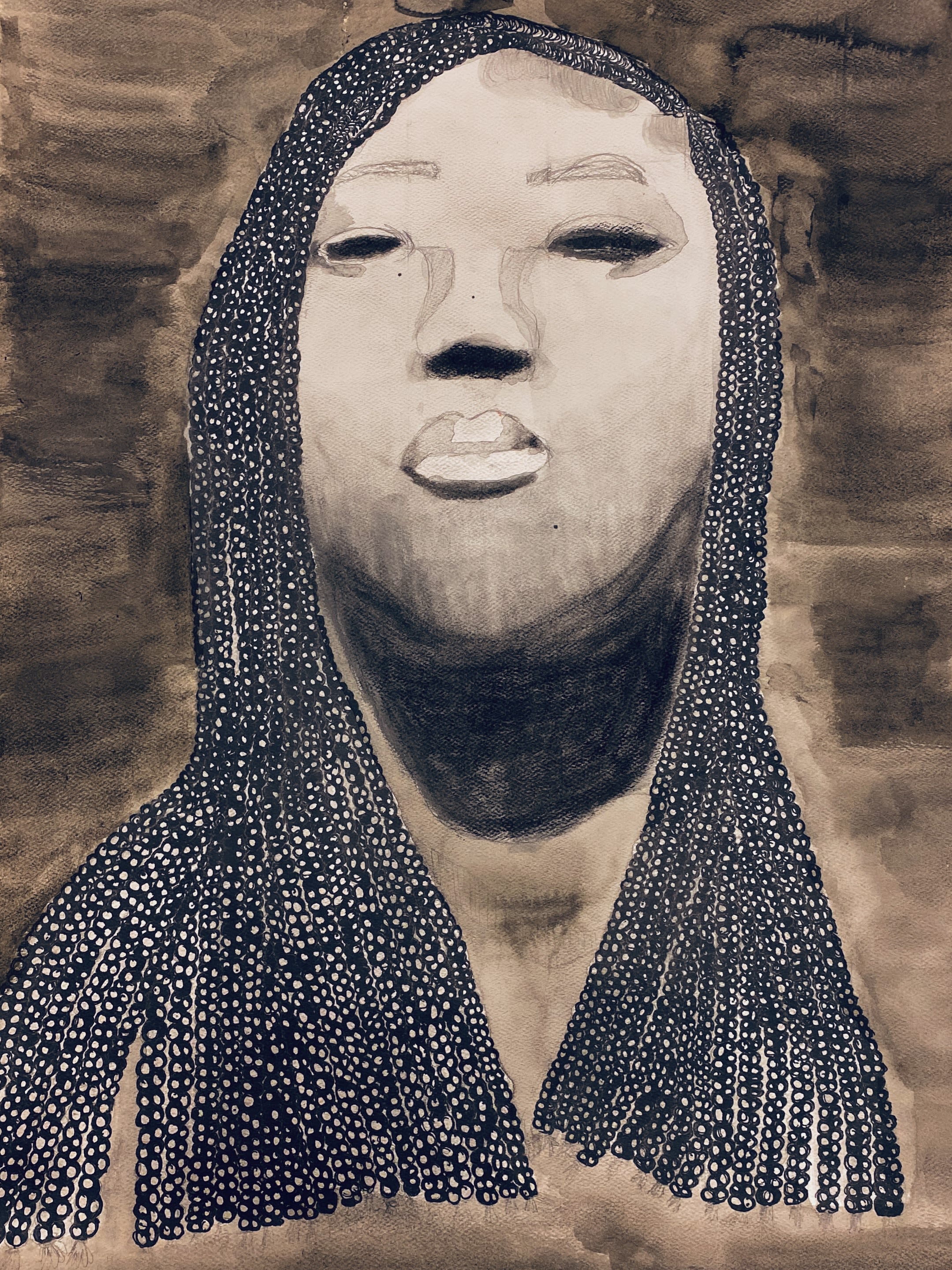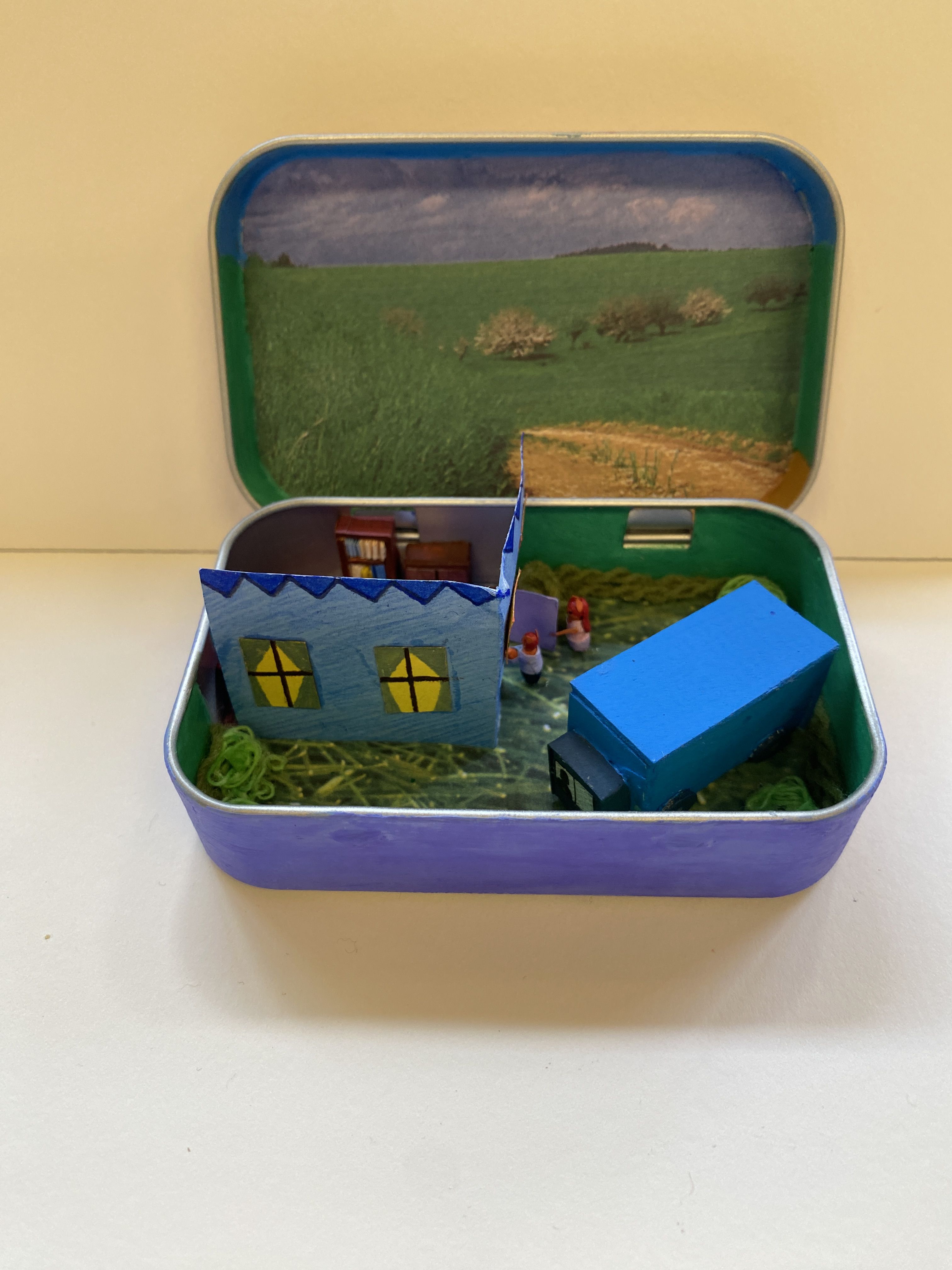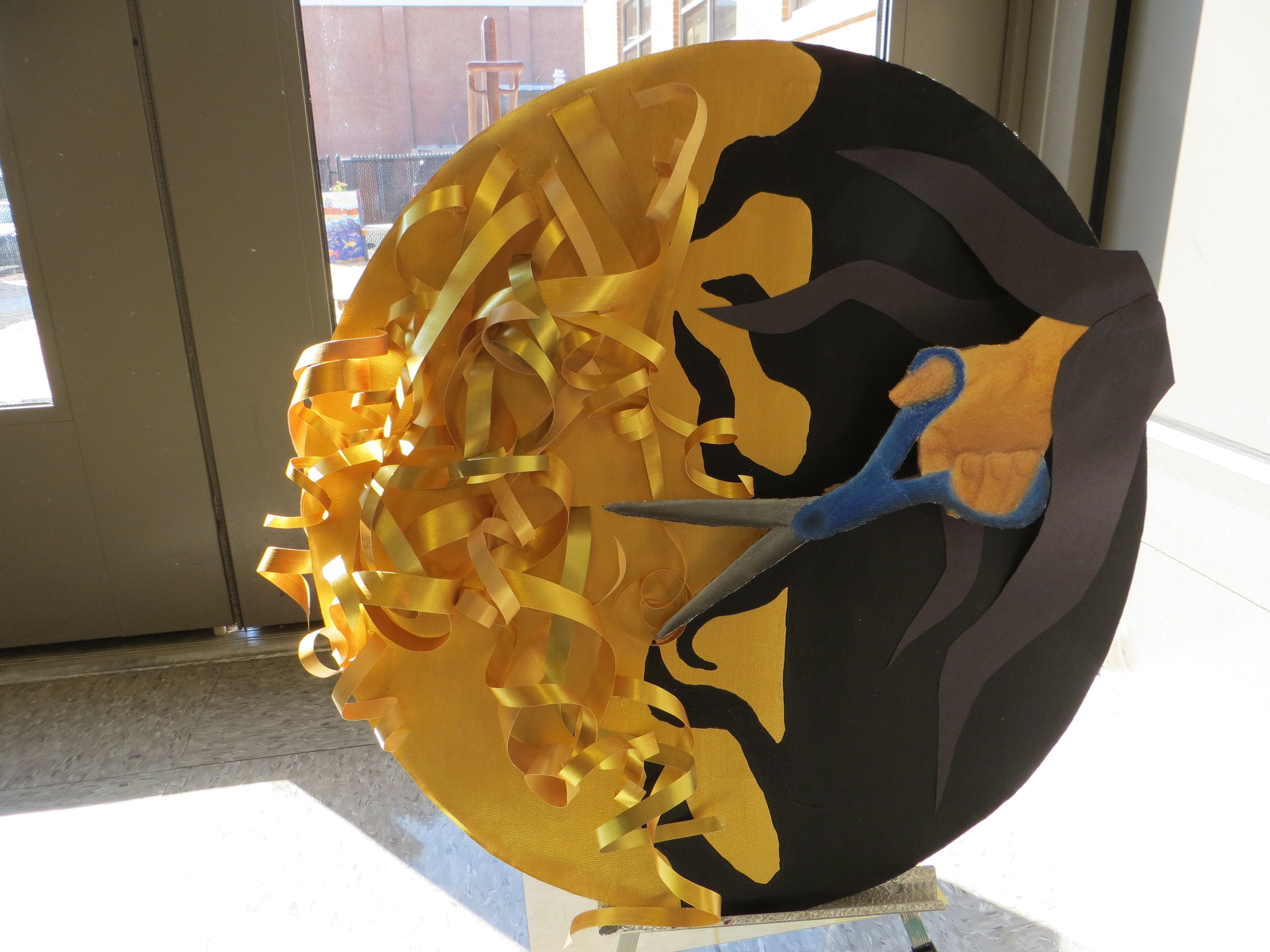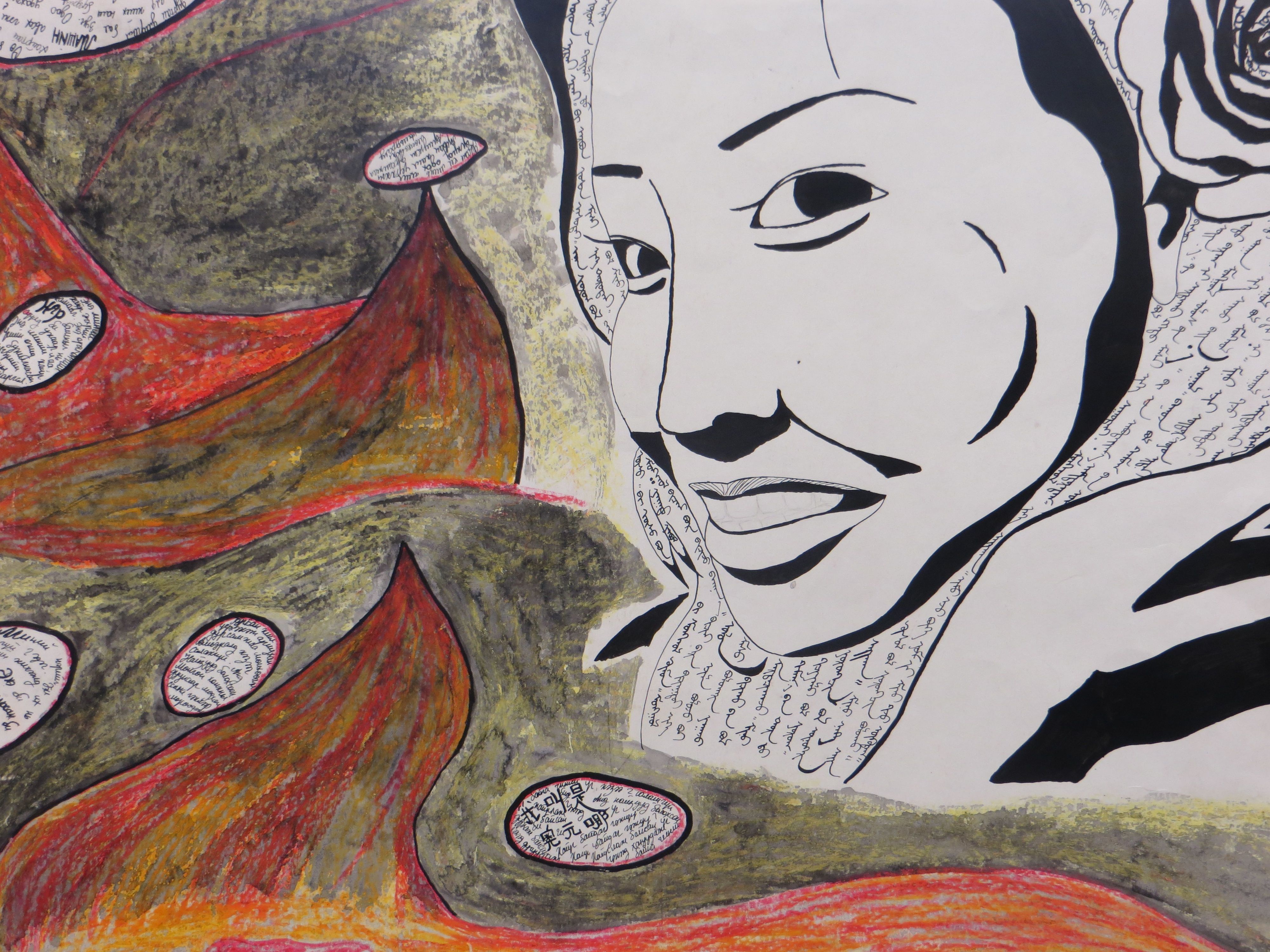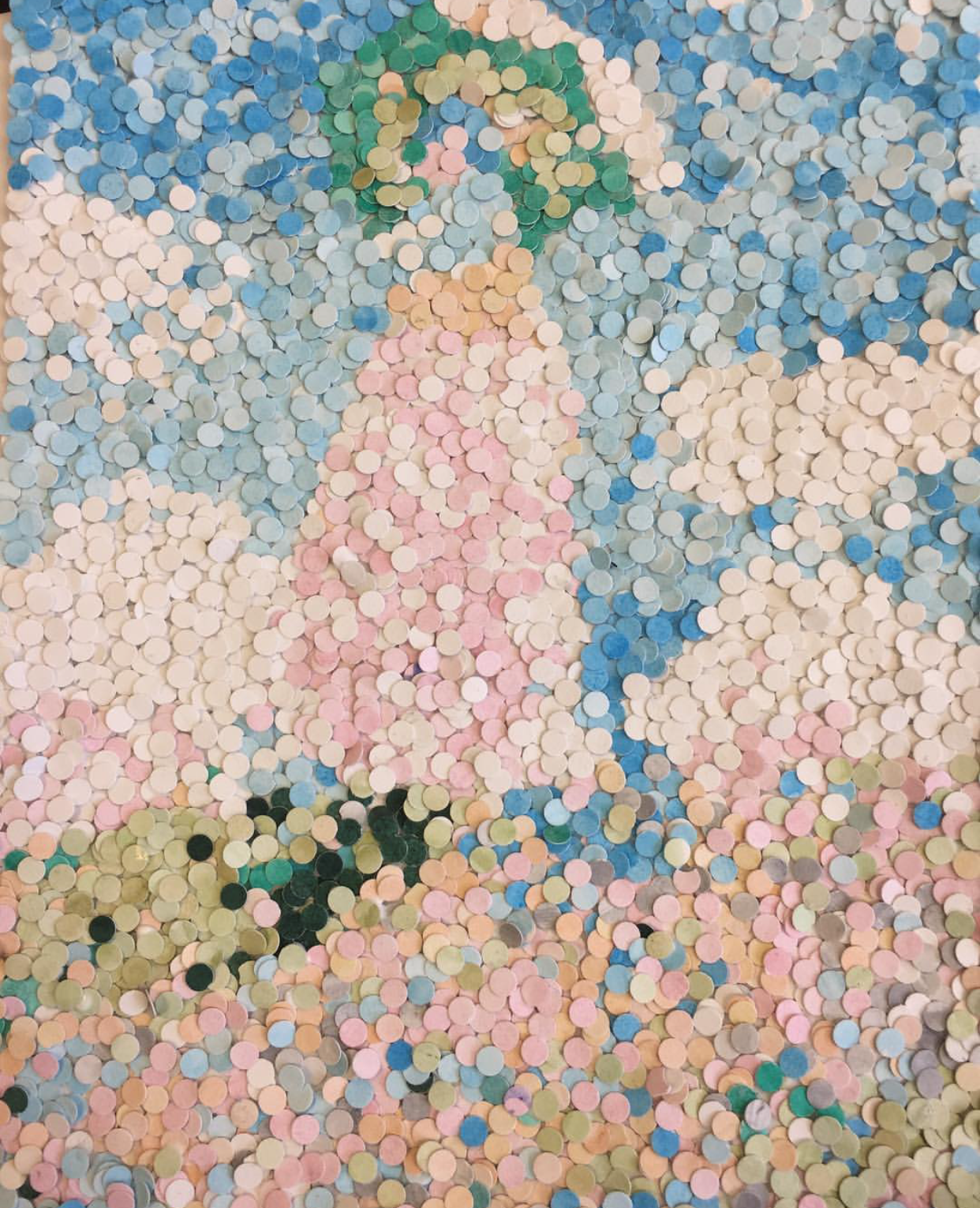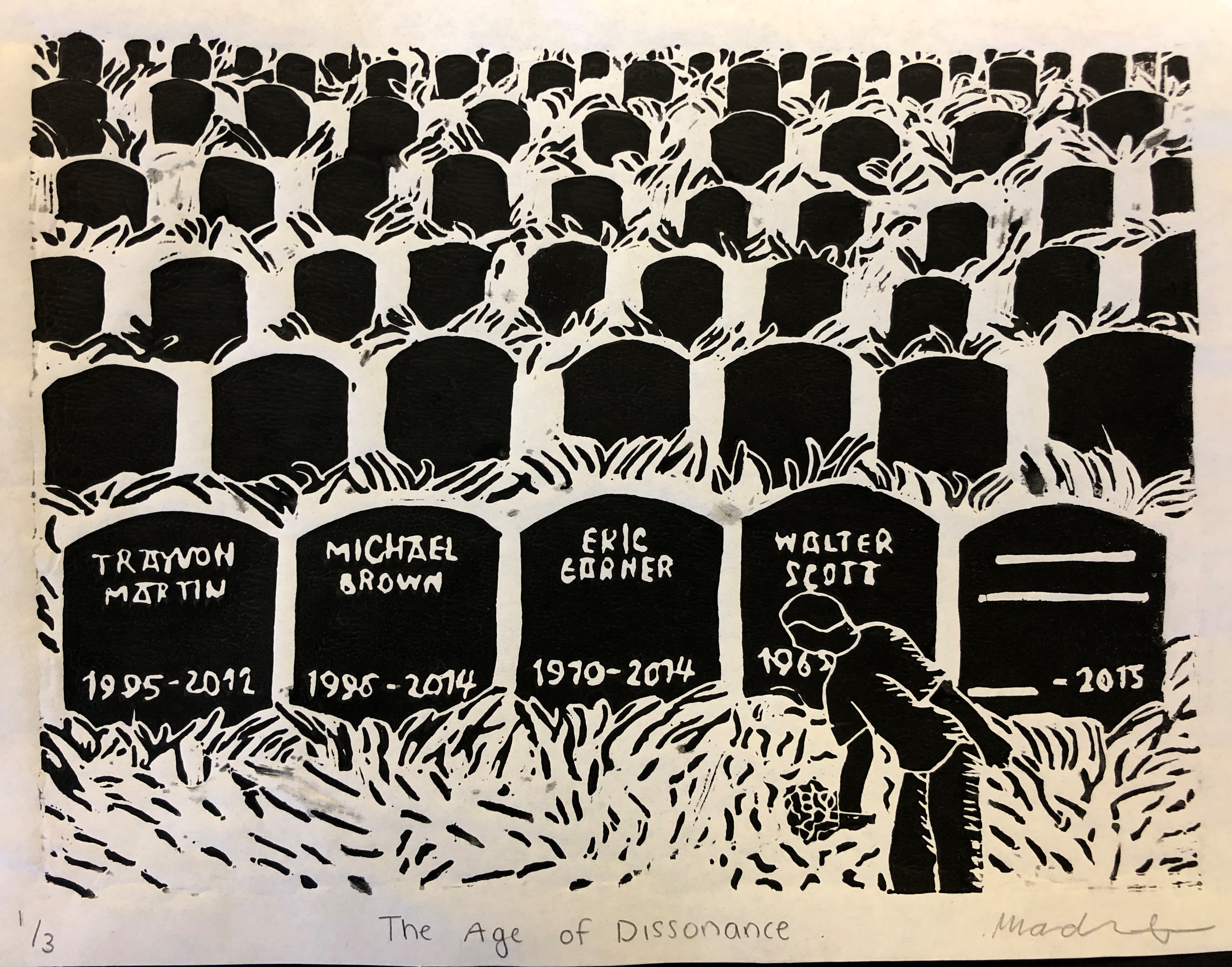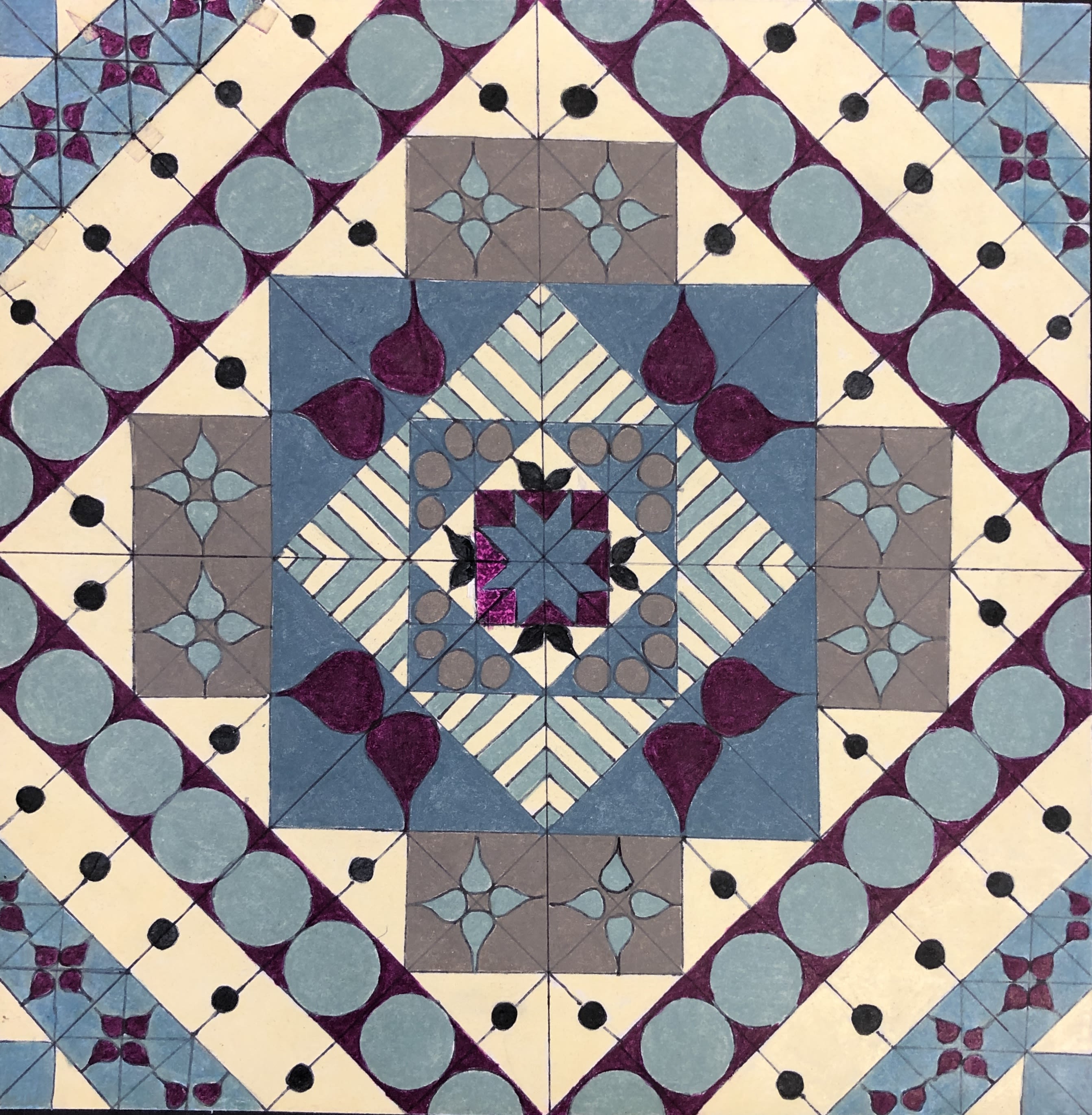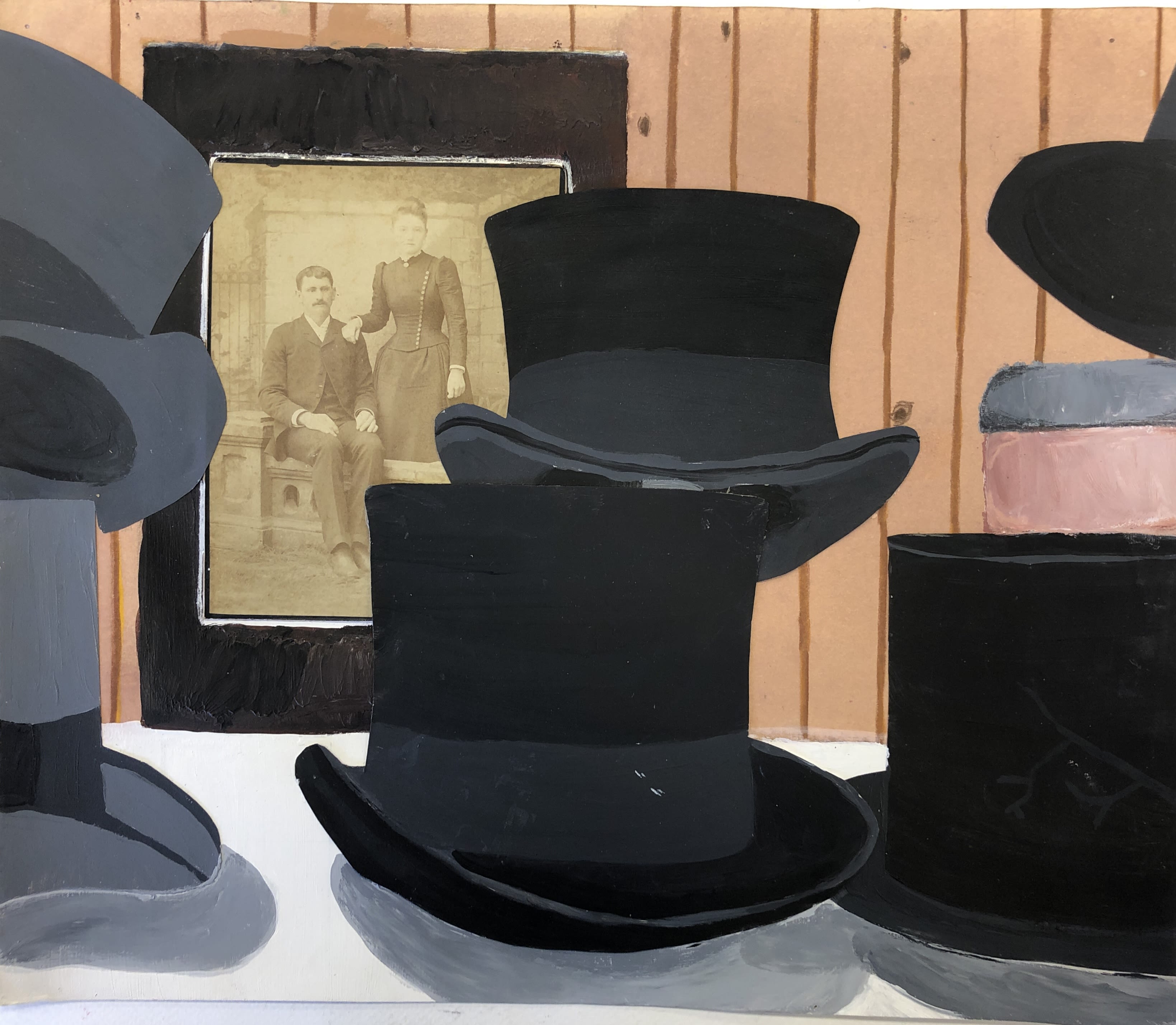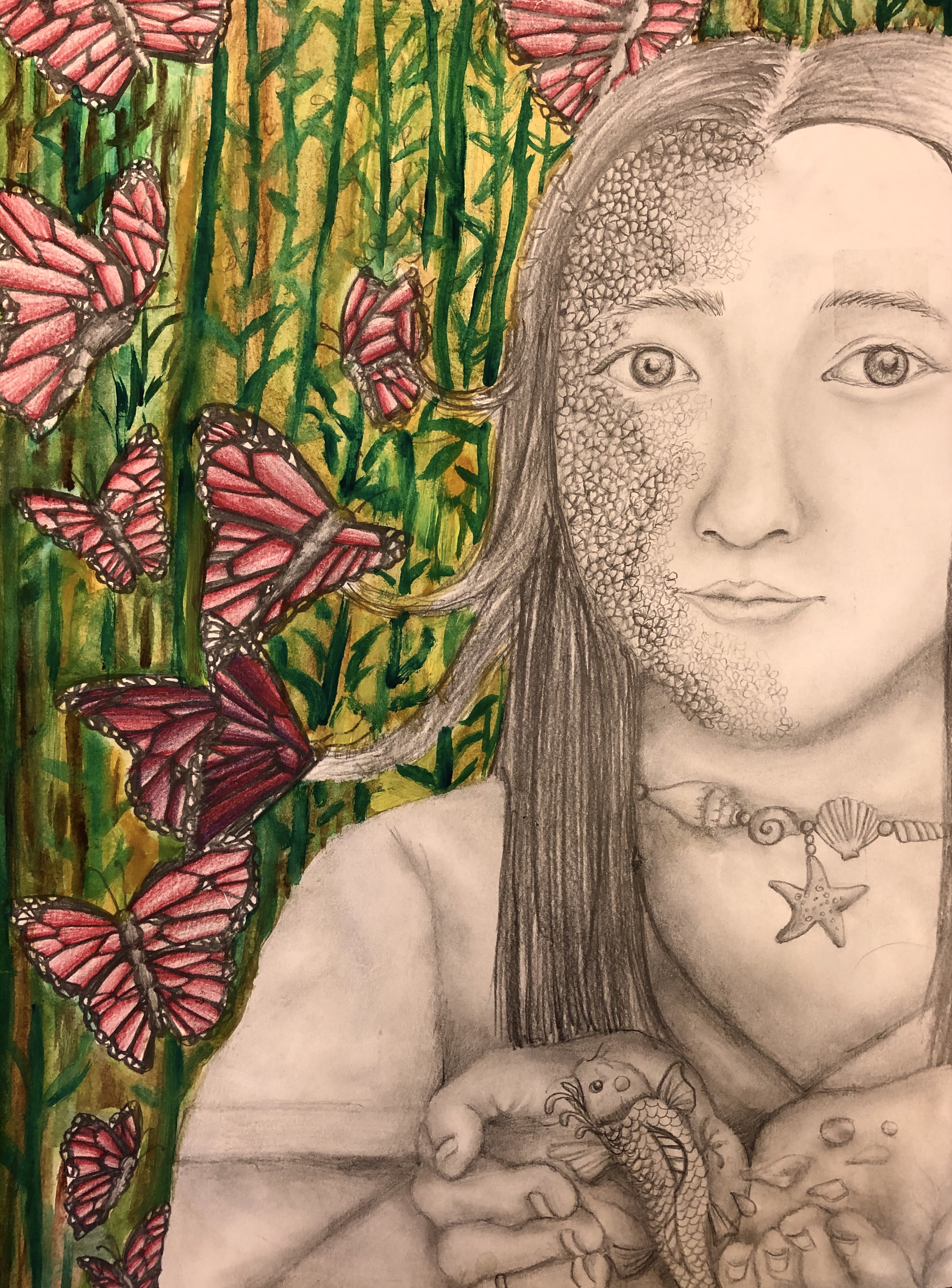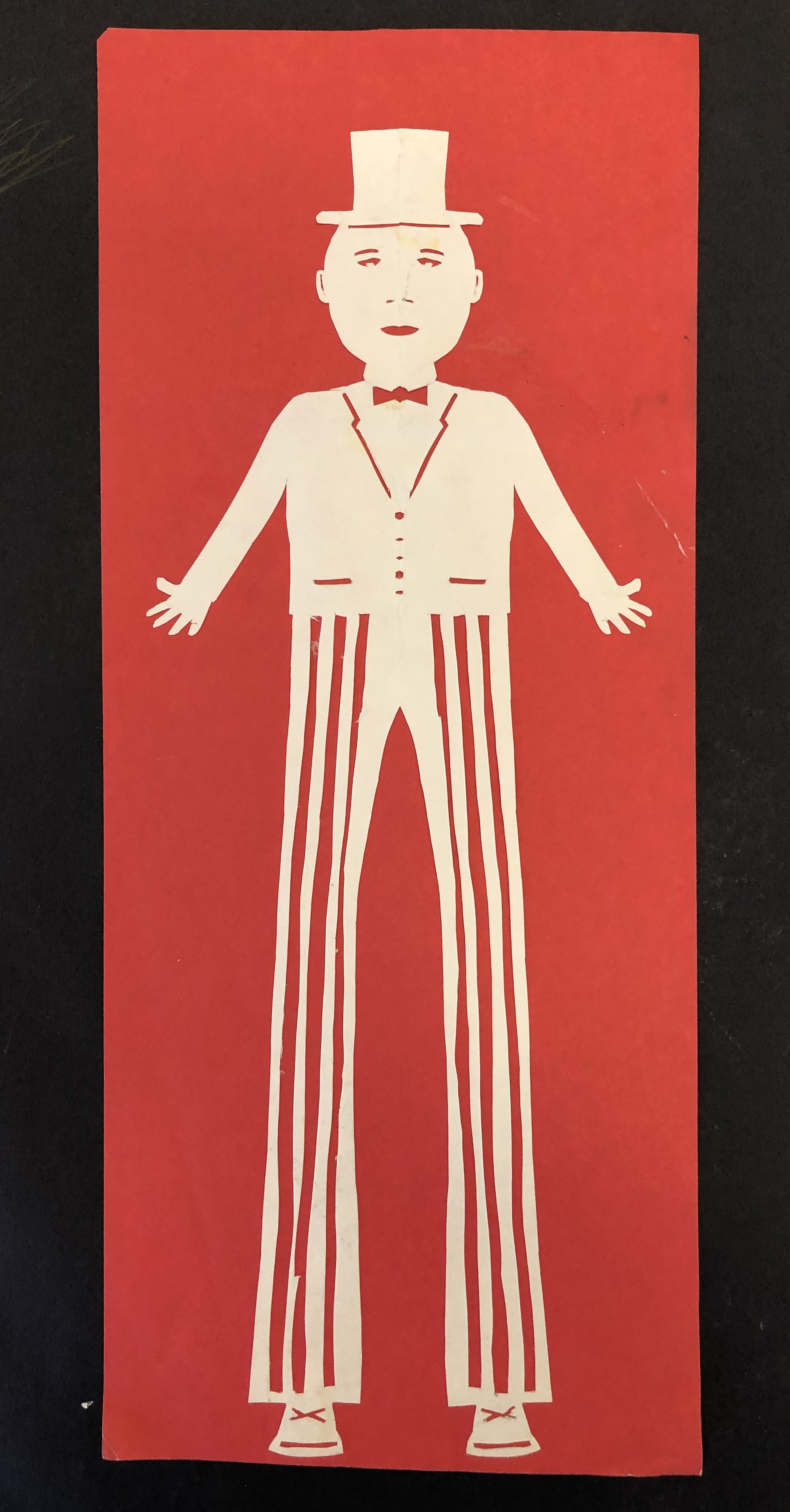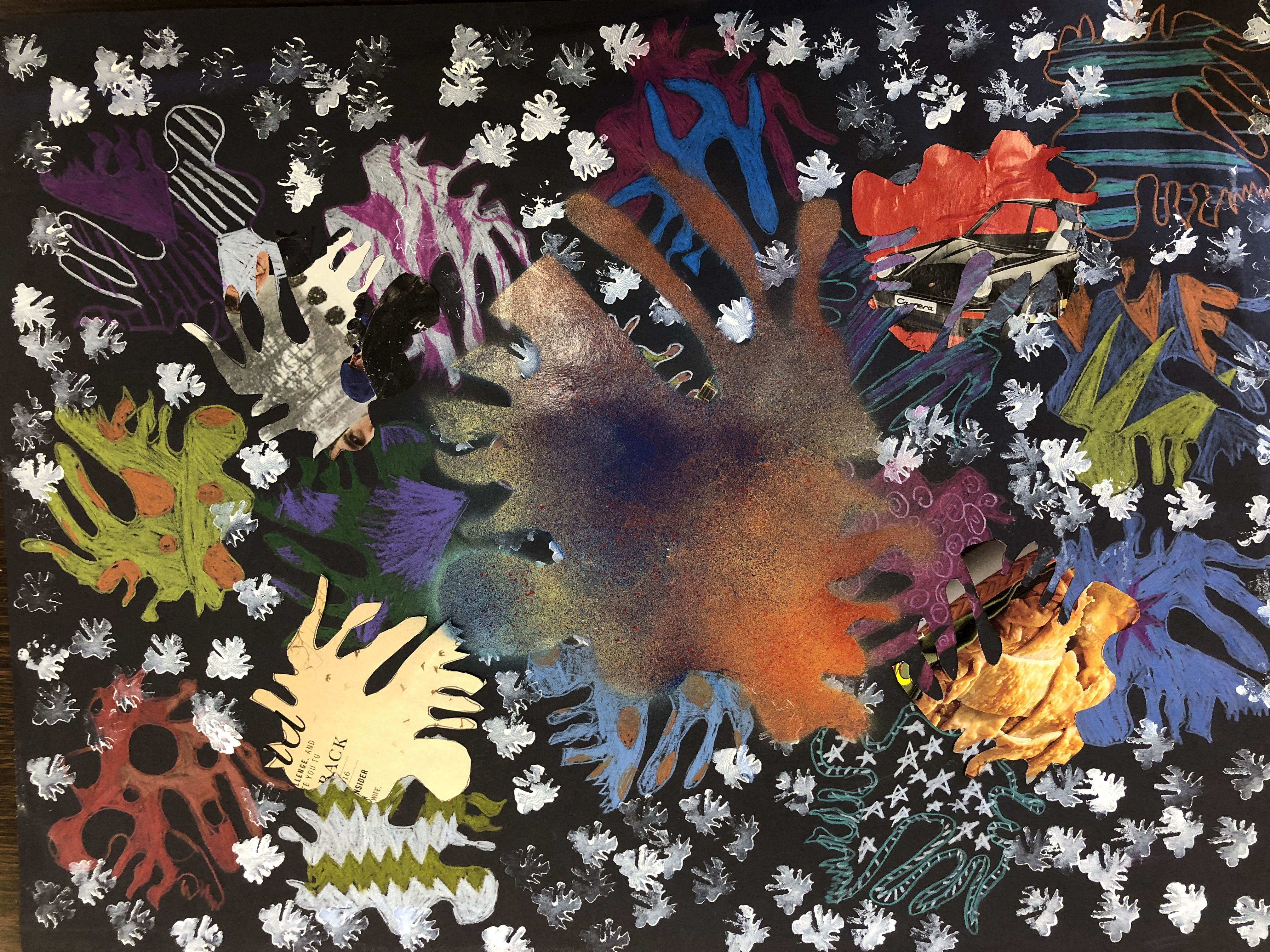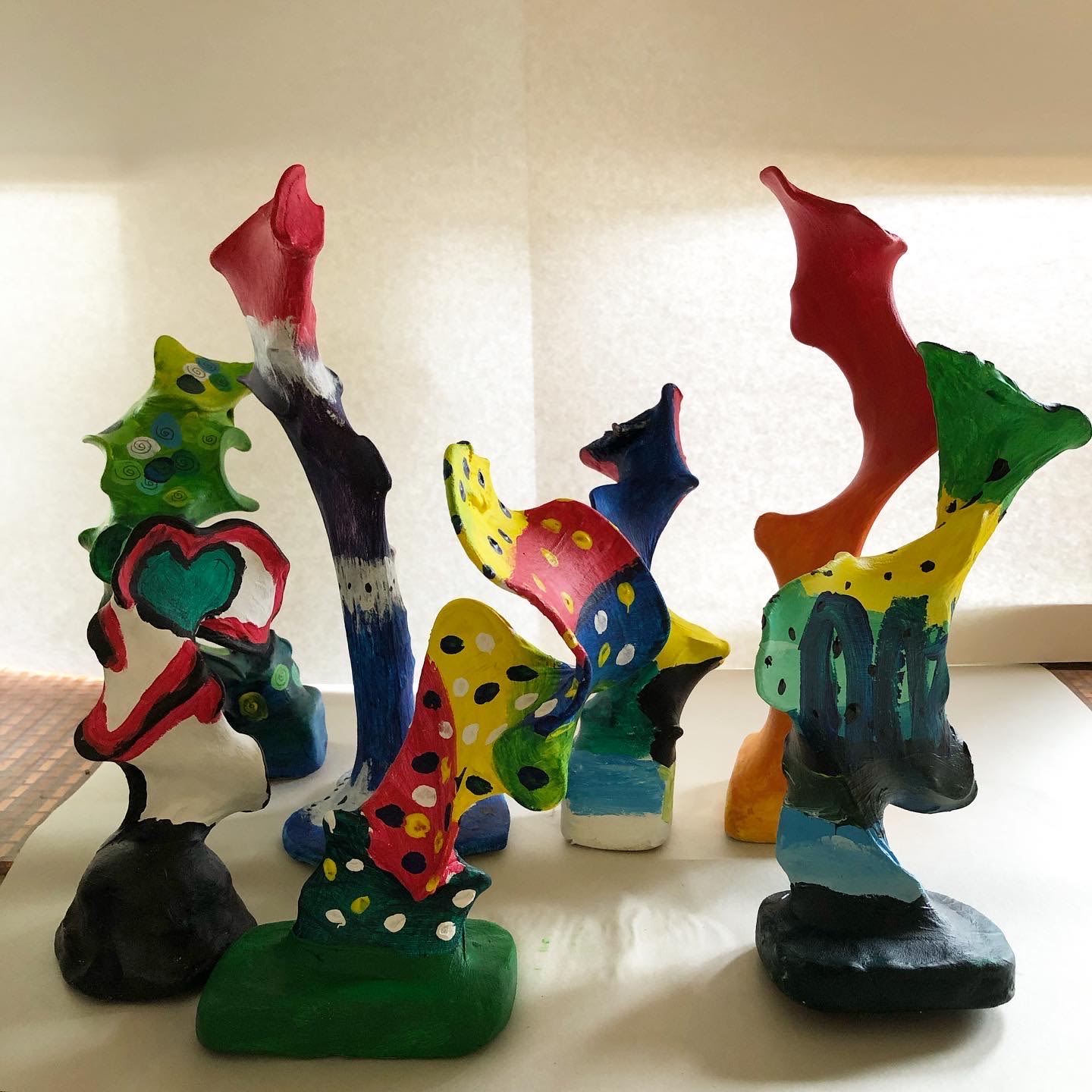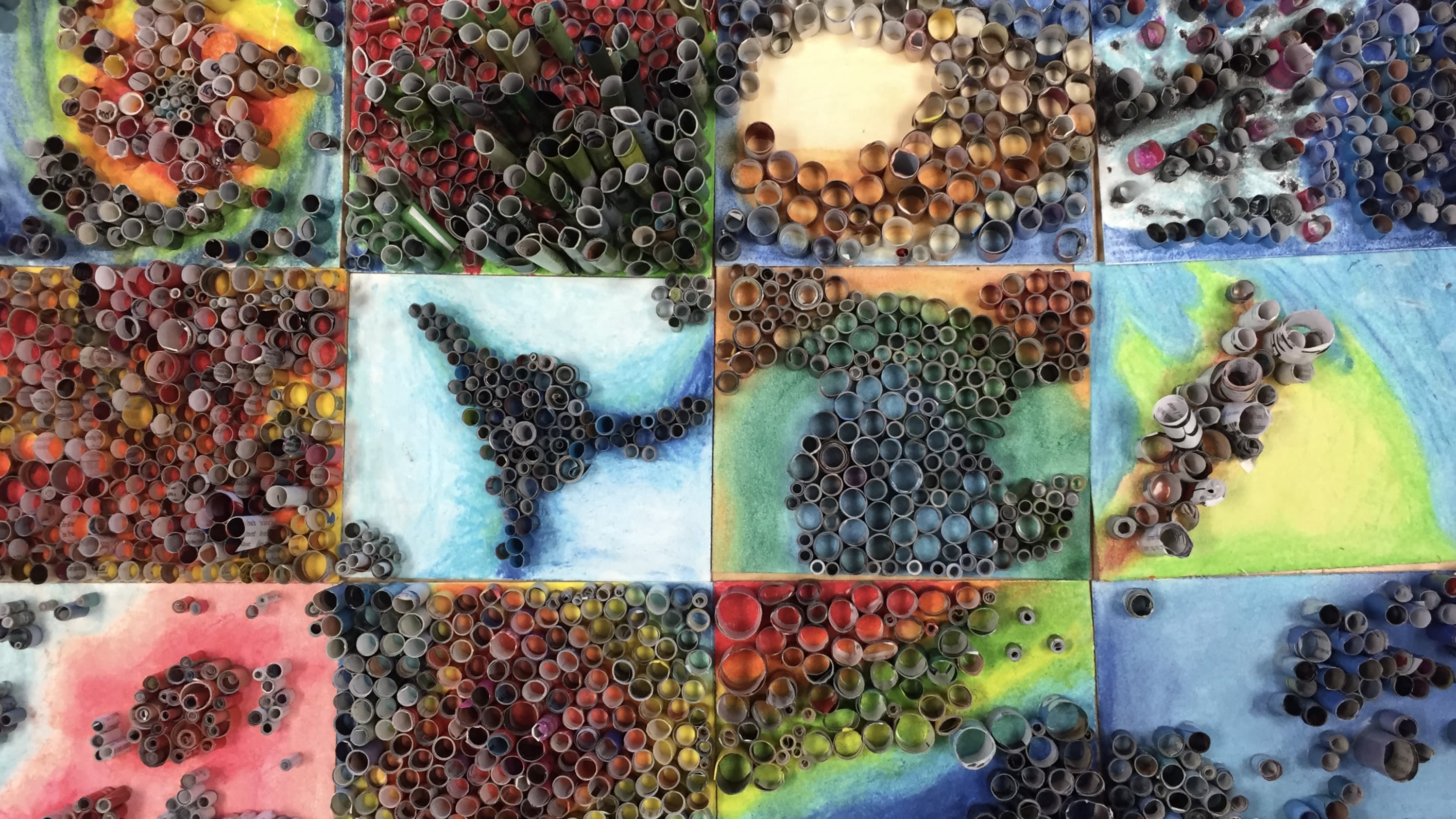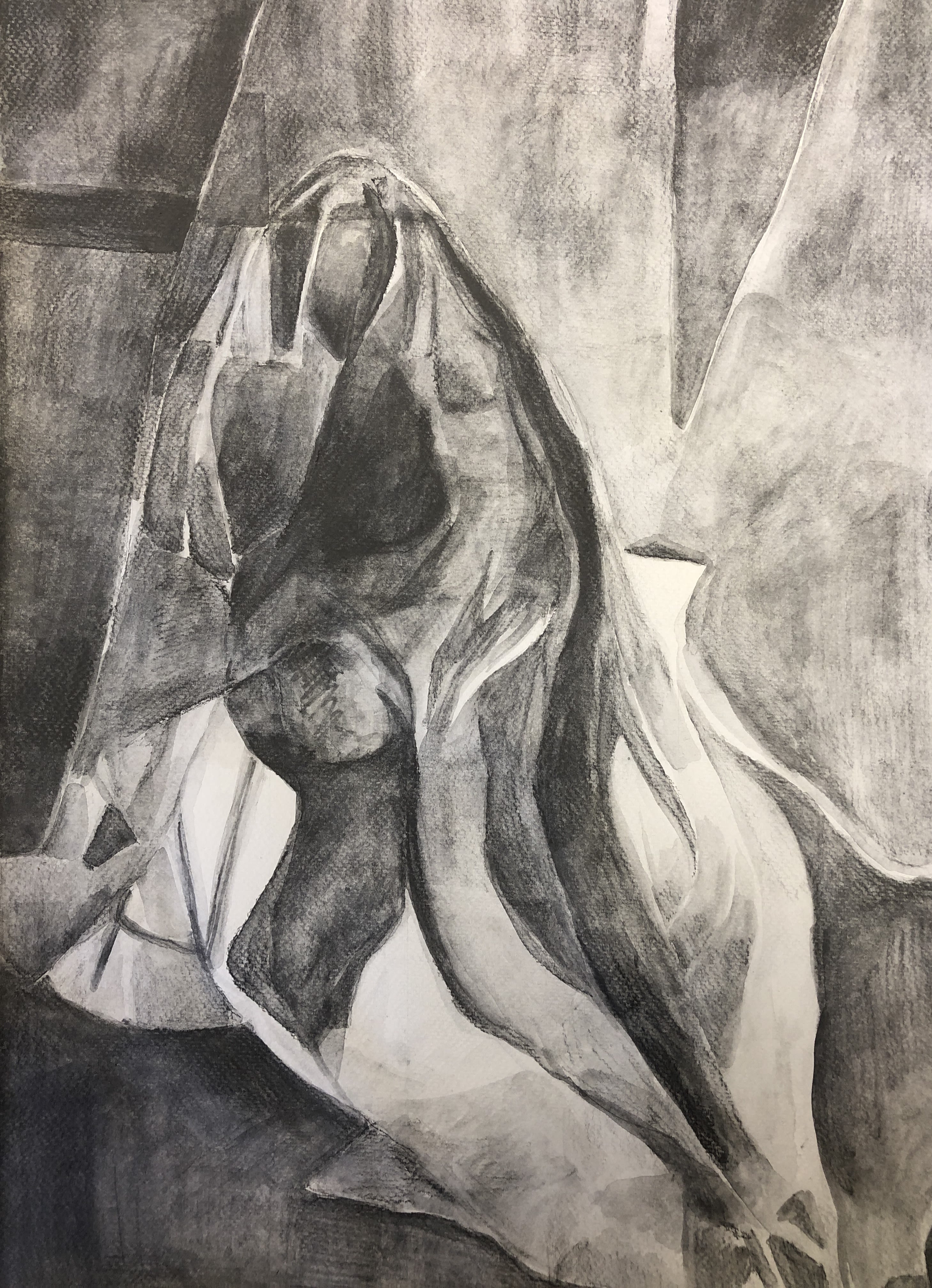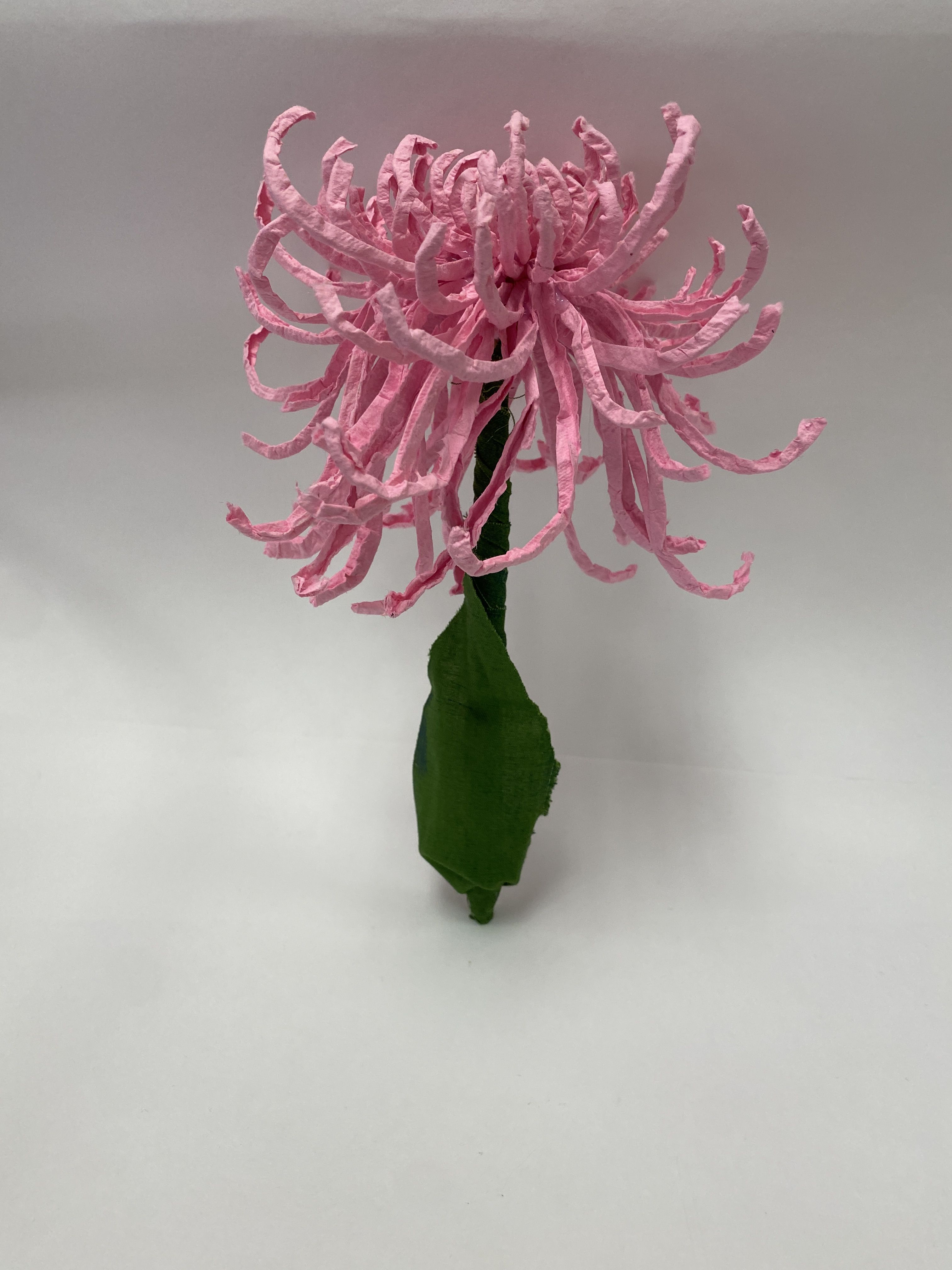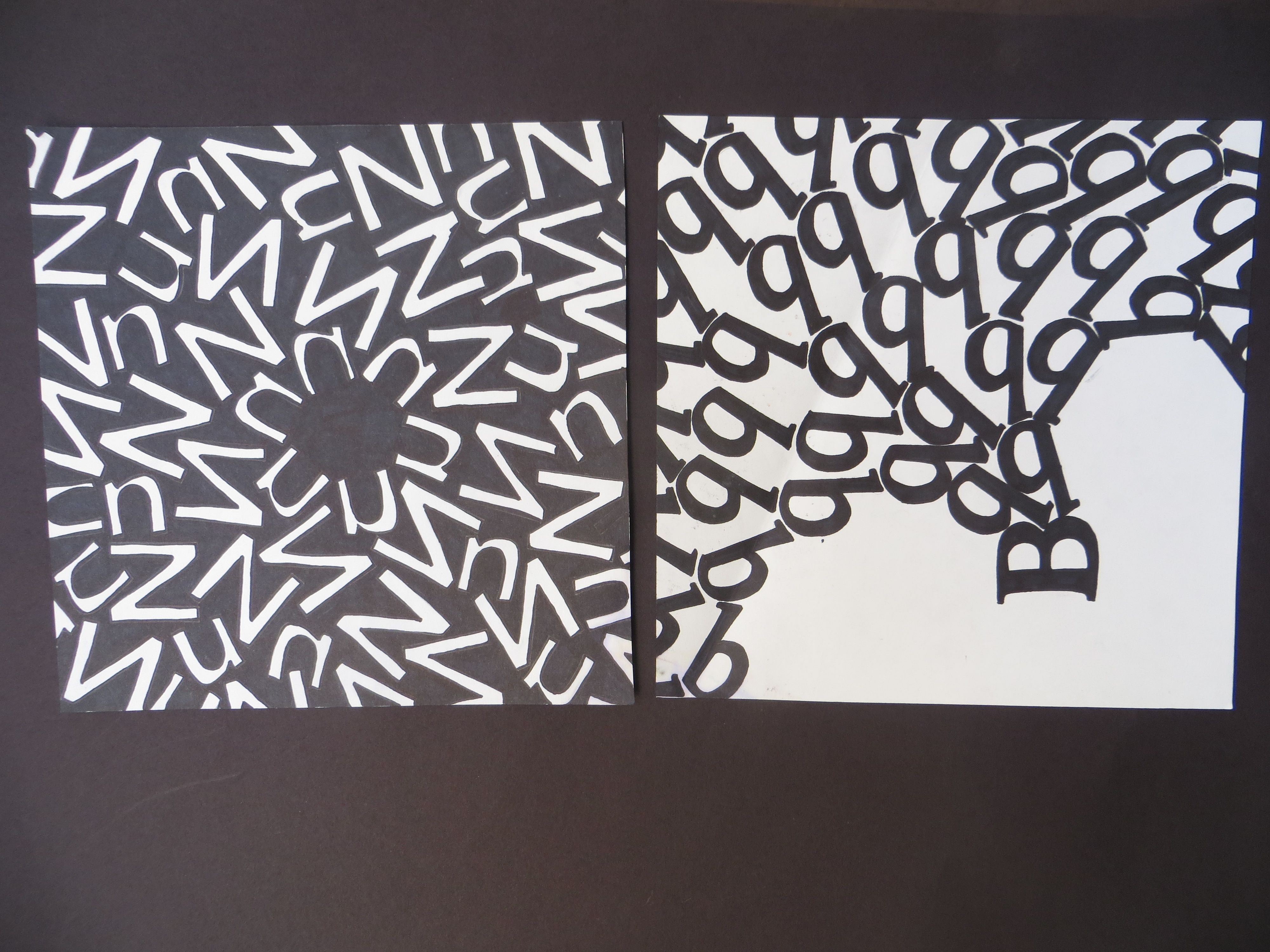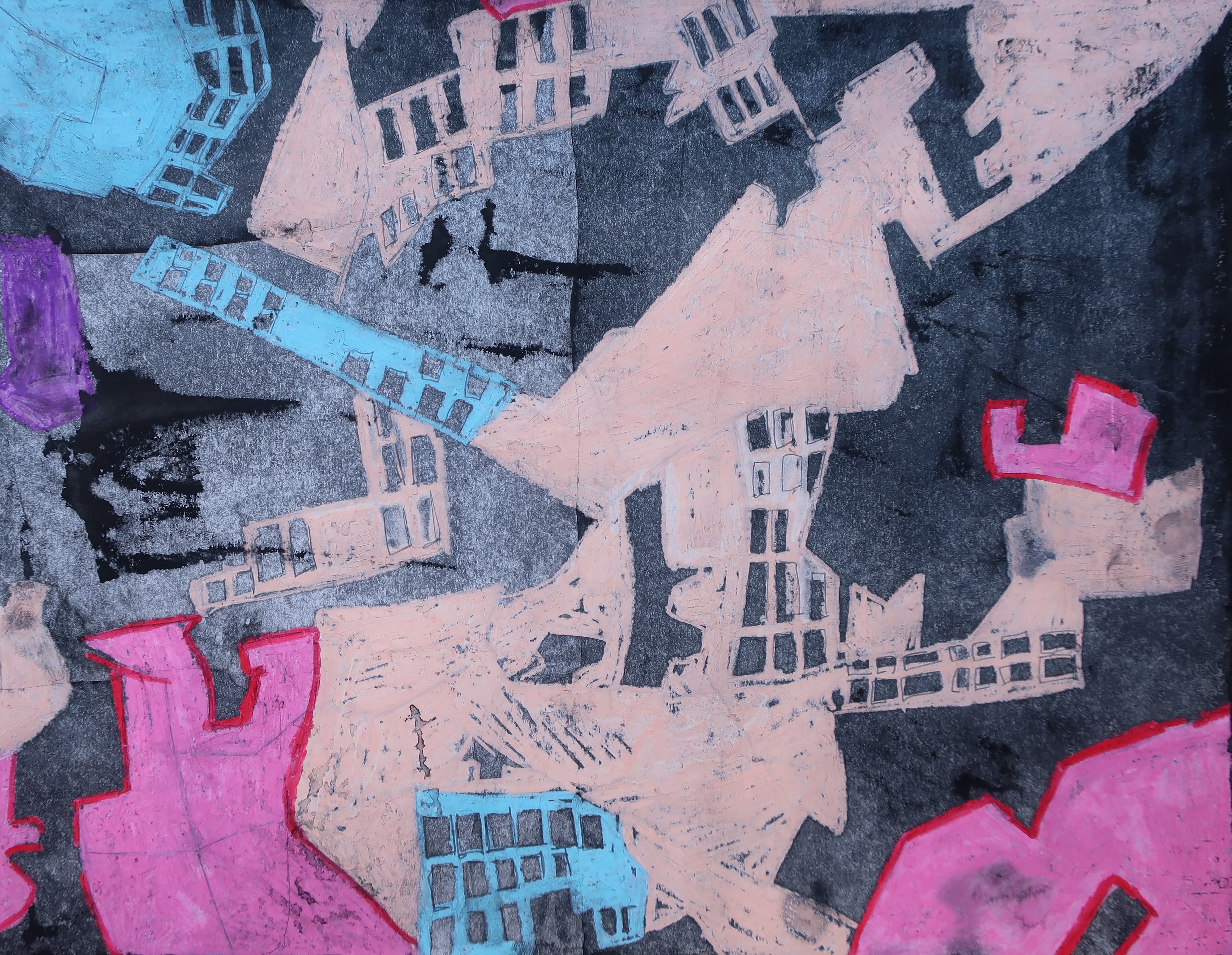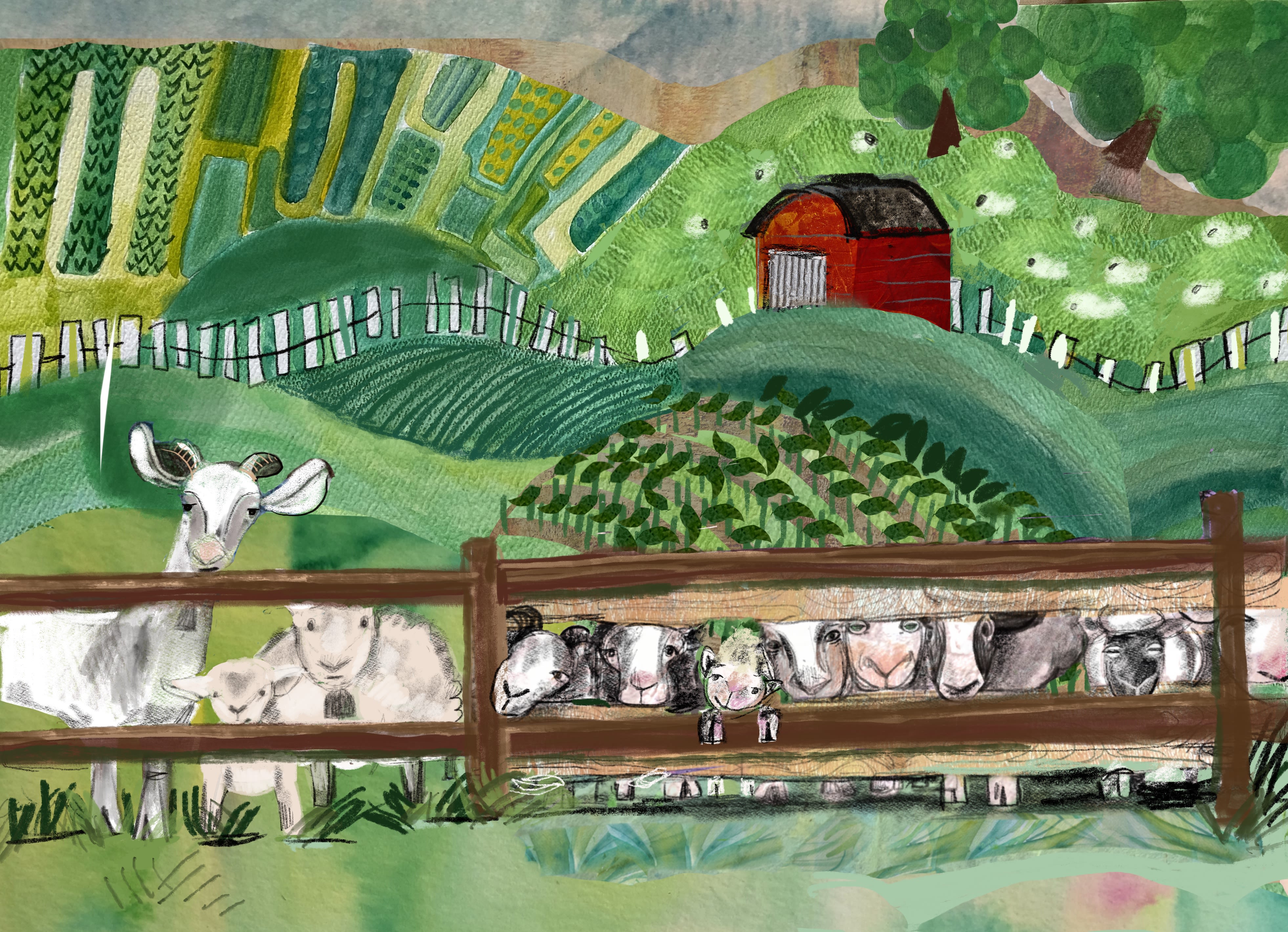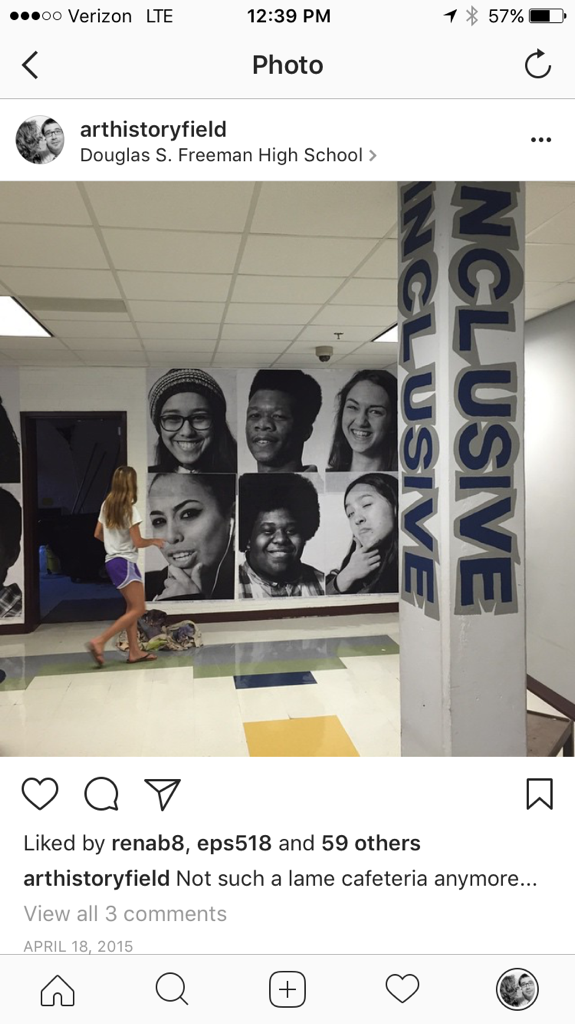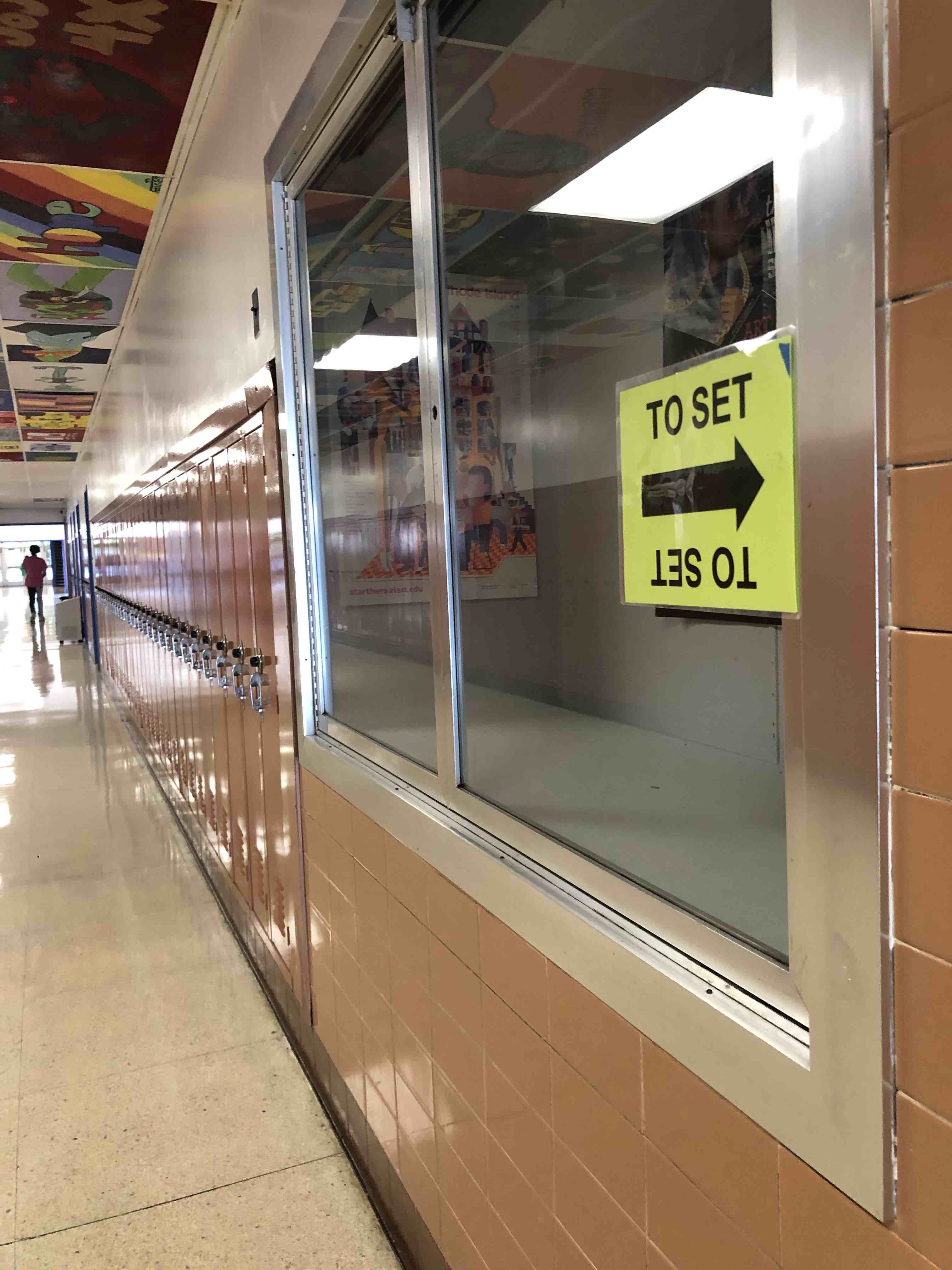Rebecca Field
Professional Portfolio
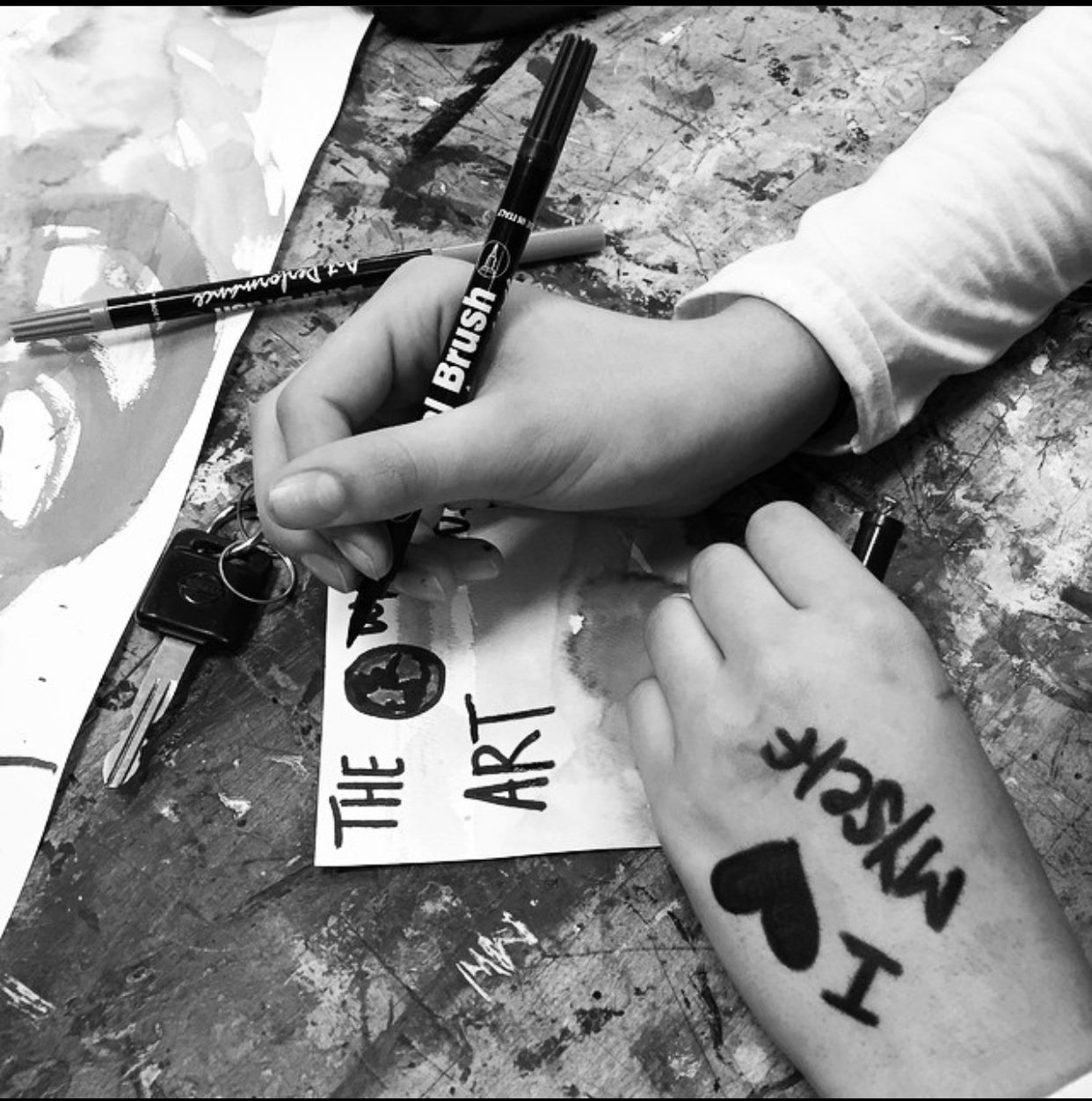
This portfolio is a story.
It tells of love, passion, joy, difficult and important work, and an intent to support and facilitate student deep thought and imagination, to connect art with authentic problem-solving, and to create interdisciplinary connections in the classroom so that my students begin to understand their place in the world.
My Interests and Pursuits: Educational justice, community-based environments, developing and supporting student voice, storytelling as social justice, authentic learning experiences, making connections that are meaningful and that communicate empathy, laughter, play, and joy.
My Background: My secondary teaching career spans 22 years. I have taught Art studio (5 levels), AP Studio (3D, 2D, and Drawing), Crafts and Ceramics, AP Art History, and adaptive art class. I have taught in the city of Richmond, Henrico County, and Baltimore County, MD. My pursuits have reached beyond teaching teenagers, as a teacher-educator, freelance artist and writer, community connector, and a multi-faceted creative mentor.
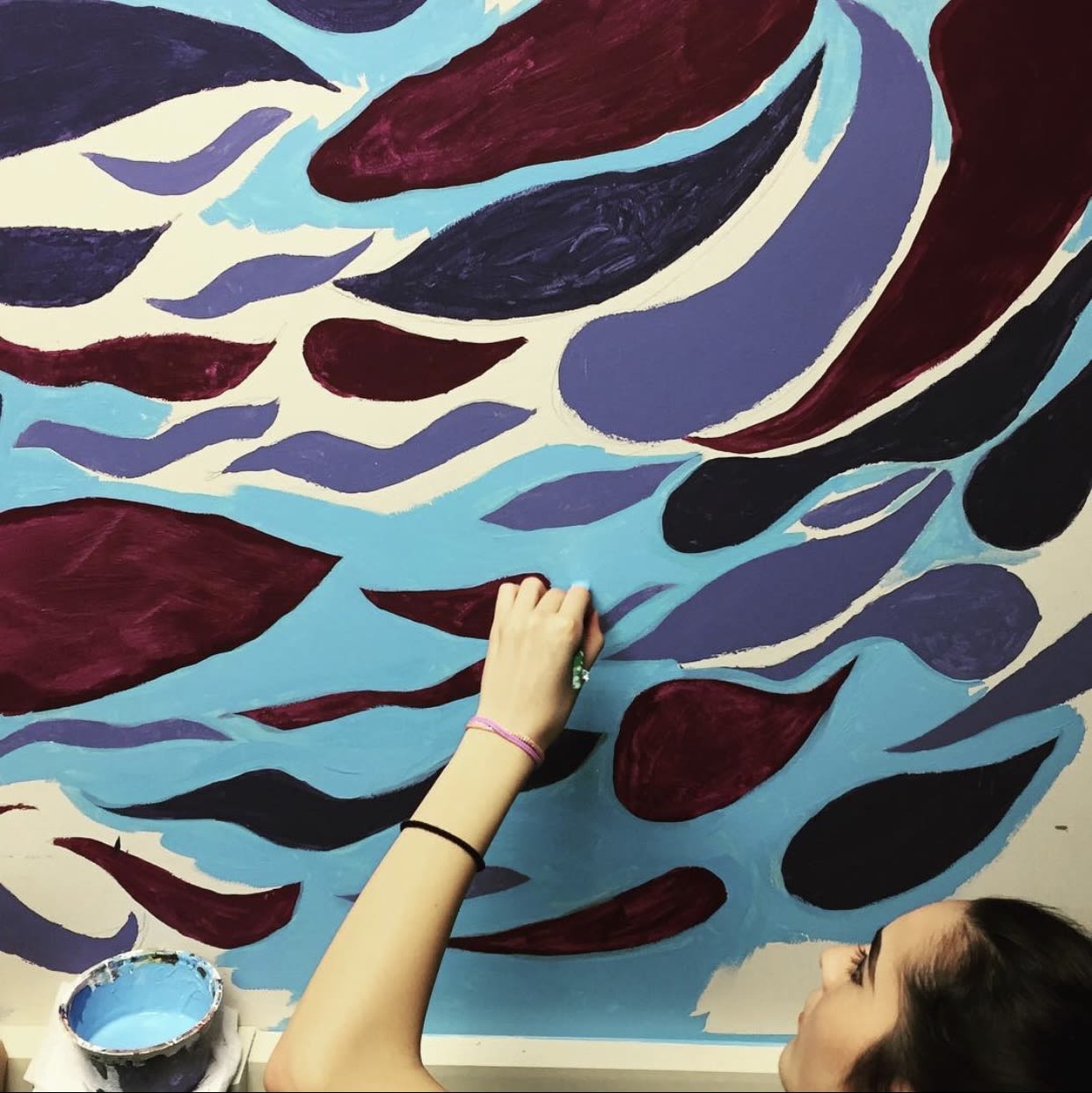

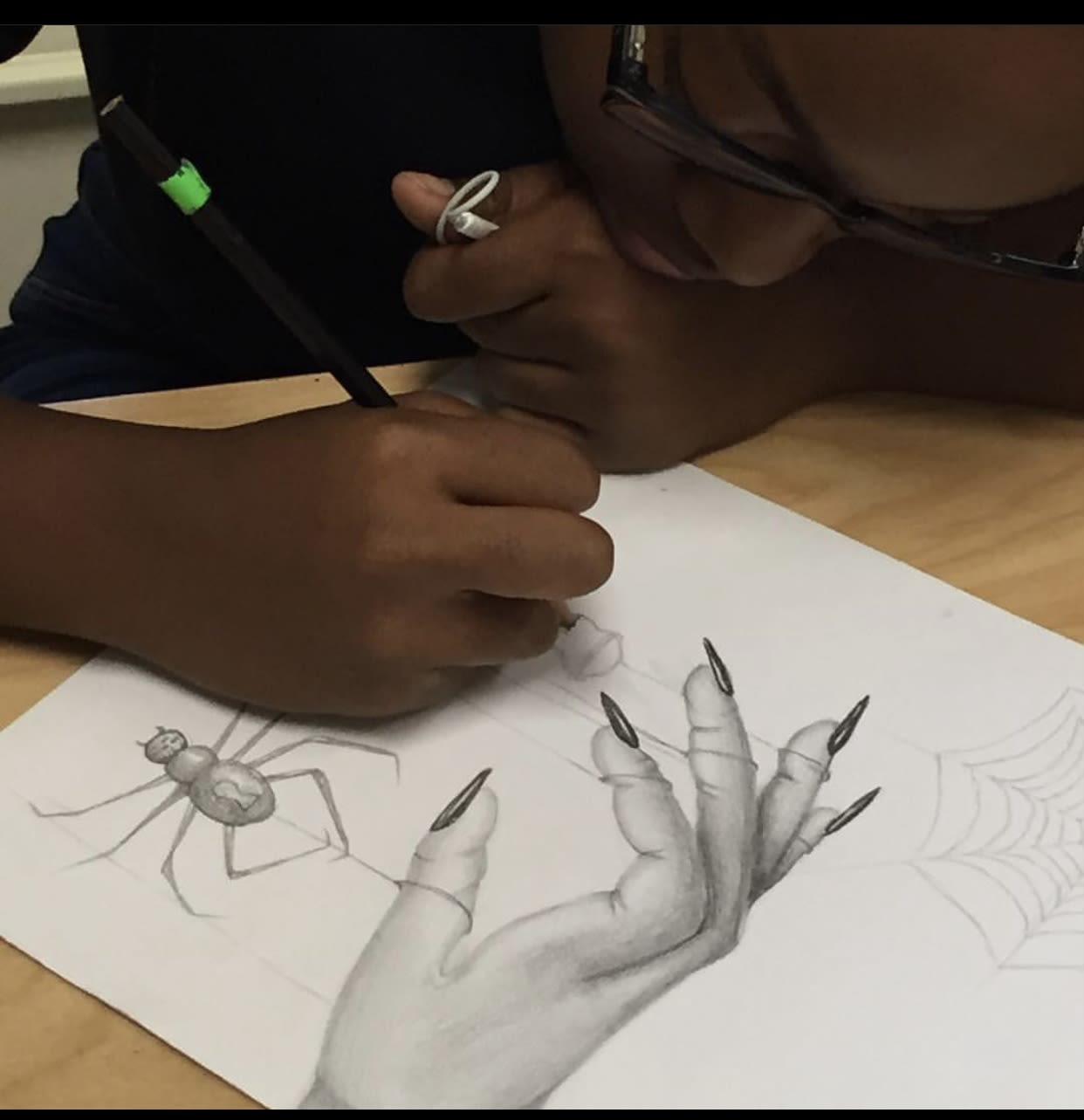
Education
Masters in Art Education, Virginia Commonwealth University
Bachelor of Arts, English and Fine Arts (Ceramics) The College of William and Mary
Professional Practice/Work Experience
2019-Present, Art Educator
John Marshall High School, Richmond City Public Schools
2008-2014
Instructor, Teacher Education Institution, Virginia Holocaust Museum and University of Richmond
2007-2019, Art Educator
Douglas Freeman High School, Henrico County Public Schools
2002-2007 Art Educator
Hermitage High School, Henrico County Public Schools
2001-2002 Art Educator
Sudbrook Magnet Middle School, Baltimore County Public Schools
Courses taught:
Sudbrook Magnet Middle School, Baltimore County, MD
Magnet level Studio Art, grades 6 and 7
Comics and graphic novel elective
Hermitage High School, Henrico County, VA
Art One
Computer Art
Senior Art
AP Art History (started program in HCPS)
Douglas Freeman High School
Art One
Art Two
Art Three
Art Four
Art Five
AP Art History
John Marshall High School
Art One
Adaptive Art
Art Three/ Four
AP Studio Art (Drawing, 3D, 2D Design)
Crafts and Ceramics (Pilot class)
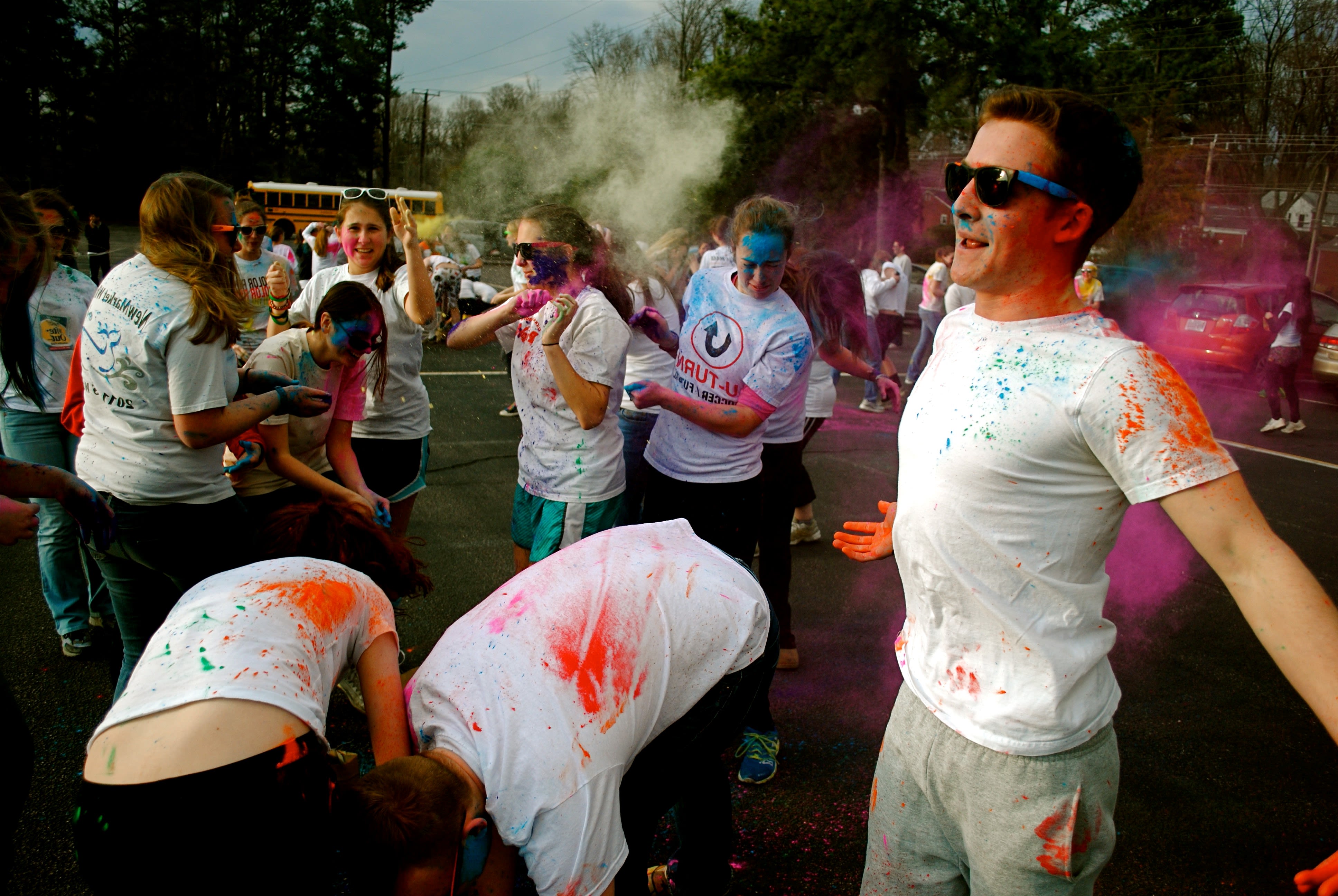
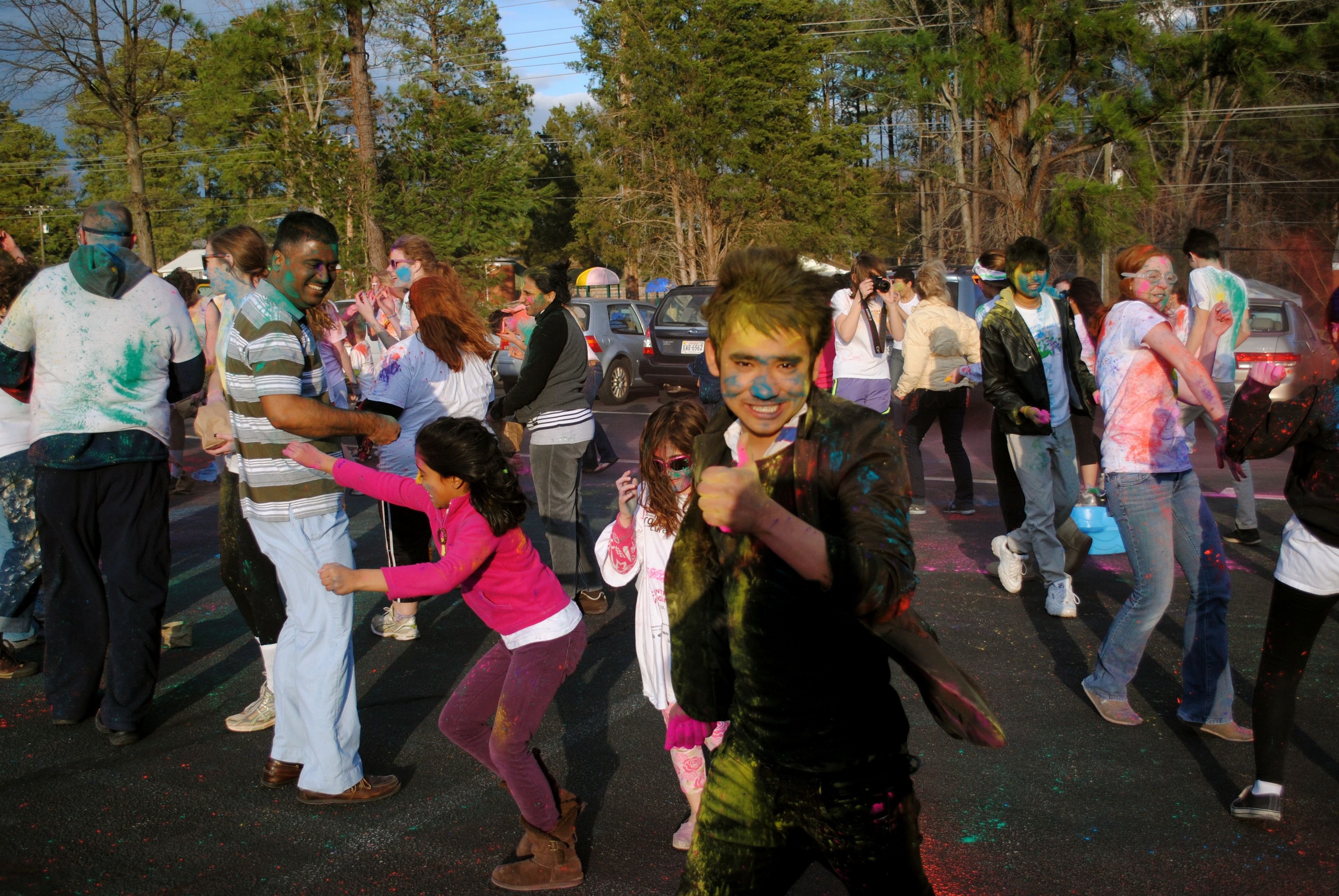

Honors and Awards
2018 High School Art Educator of the Year, Henrico County, Virginia
Henrico 21 Winner, 21st Century Learning (innovation) Initiative
2015, Henrico County Public Schools
R.E.B. for Teaching Excellence Award 2014, Community Foundation of Richmond
VAEA Central Virginia Region High School Art Educator of the Year, 2014
Tuckahoe District Teacher of the Year, 2012-1013 Henrico County Public Schools
Gilman Award, Teacher of the Year, Douglas Freeman High School, 2013-2014
21st Century Teacher of the Year, Douglas Freeman High School, 2012-2013
2012-2013 Henrico County High School Art Educator of the Year
Selected Professional Roles
Clinical Faculty, Mentor/Cooperating teacher, practicum and student teachers, VCU and JMU
Sponsor and founder, LGBTQ Hang (support), John Marshall High School
AP Teacher Leader, John Marshall High School
Superintendent’s Teacher Advisory Board, RPS
Sponsor, Human Rights Club, Freeman High School, Founder of Freeman's Holi Festival (pictured above)
Founding member, Henrico County Schools Equity and Diversity Taskforce
Facilitator, Richmond Educational Equity Initiative, Virginia Center for Inclusive Communities
Contributing member of the Curriculum Development Committee, Black Lives Matters in Schools National Organization
VCU Metropolitan Education Research Consortium action researcher
Long term member, Teacher Advisory Committee, Virginia Museum of Fine Arts
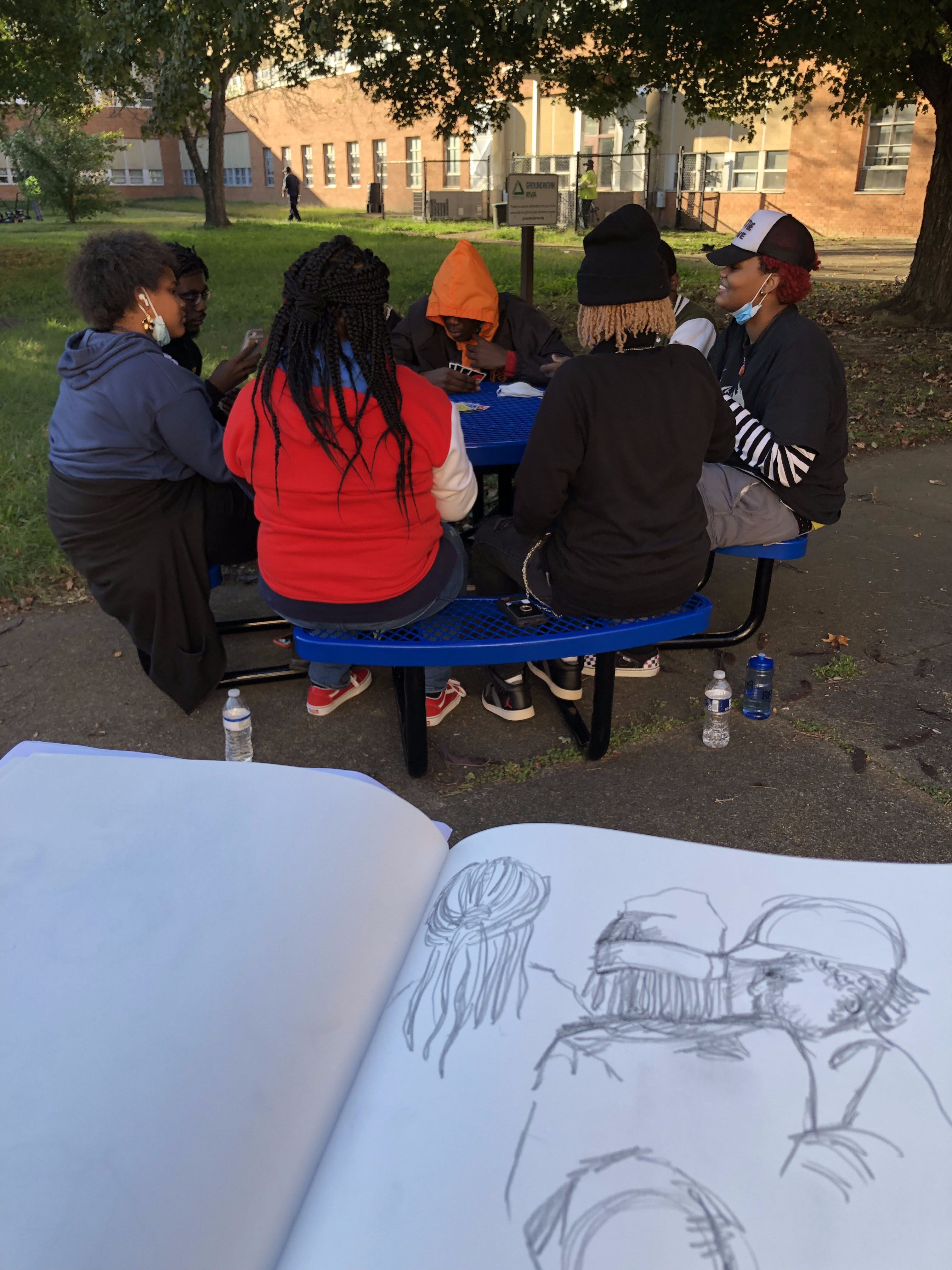


Special Events, Classroom Partners
Collegiate School Global Issues Forum
Virginia Center for Inclusive Communities
Eylie the Therapy Dog
Virginia Holocaust Museum and survivors, Helen and Alan Zimm (OBM), Bud and Sonya Brodecki (OBM), Helena Zimm, Alex Lebenstein (OBM)
Falling Whistles, Invisible Children
Panzi Hospital, Uganda and Artist Peter Franz (With Dr. Dennis Mwangi, Nobel Peace Prize winner)
Christian Piccolino, Free Radicals Project
Carl Wilkins, relief worker, Rwanda
Artist Noah Scalin
Artist Keshia Eugene
Artists Hamilton Glass and Matt Lively
Artist Lisa Whittington
Production Designer Bruton Jones
Certifications
PK-12 Virginia State Teaching License
College Board Advanced Placement Art History
College Board Advanced Placement Studio Art
Memberships
National Education Association (VEA, REA)
National Art Education Association (VAEA, CRVAEA)
Society of Children’s Book Writers and Illustrators (SCBWI)
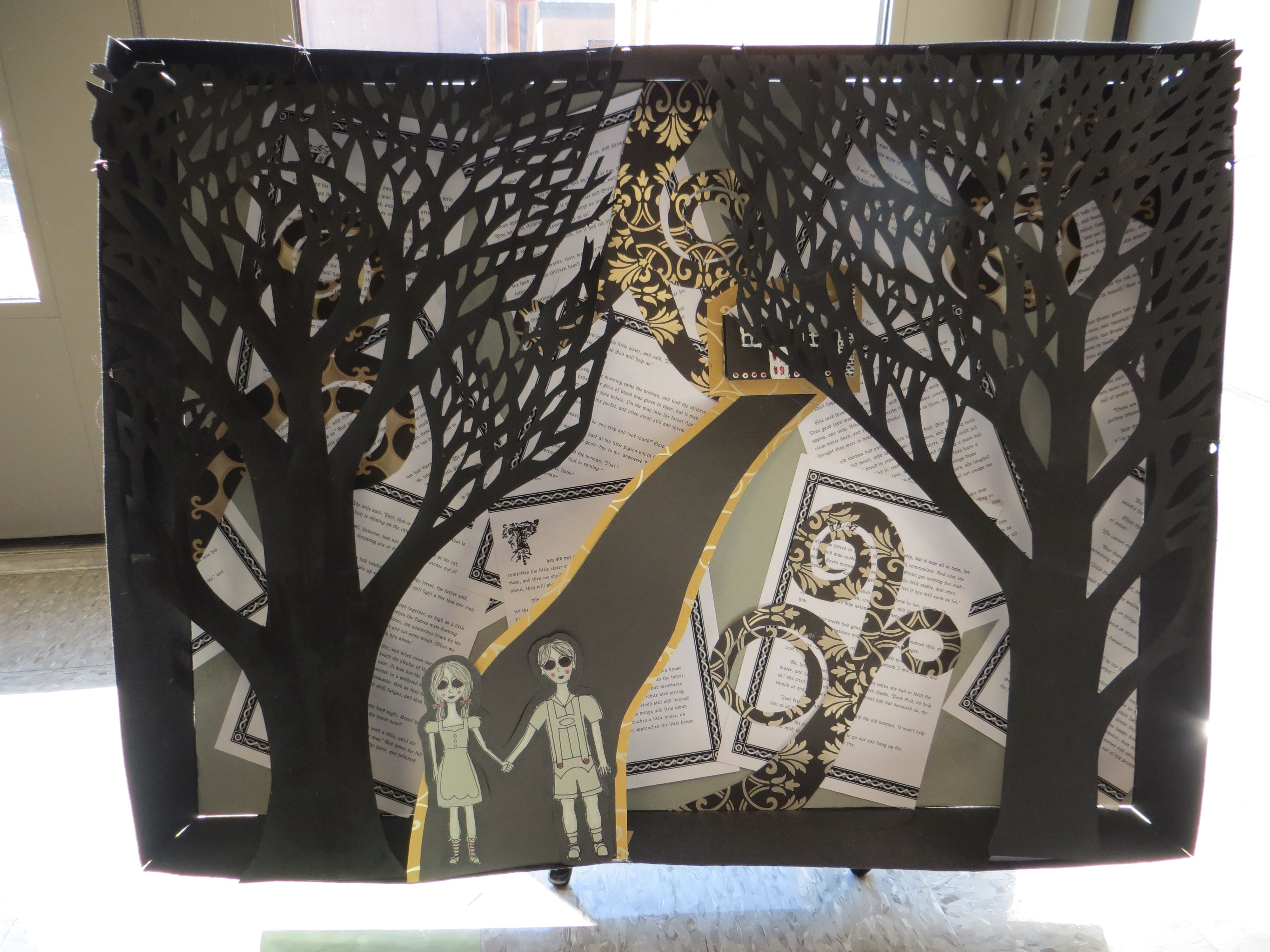



The Inside Out Project, Freeman High School
The Inside Out Project, Freeman High School
Art 3 Sensory Room Redesign for Students with Autism, Freeman
Art 3 Sensory Room Redesign for Students with Autism, Freeman
Collaboration in Art 1
Collaboration in Art 1
Raft of the Medusa, AP Art History
Raft of the Medusa, AP Art History
Shadow Play Art 1
Shadow Play Art 1
Curriculum
Each are Hyperlinks
Black Artist Index -(for everyone) Work in progress
Social Justice Teaching (for RPS Educators)
Afrofuturism (for Students)
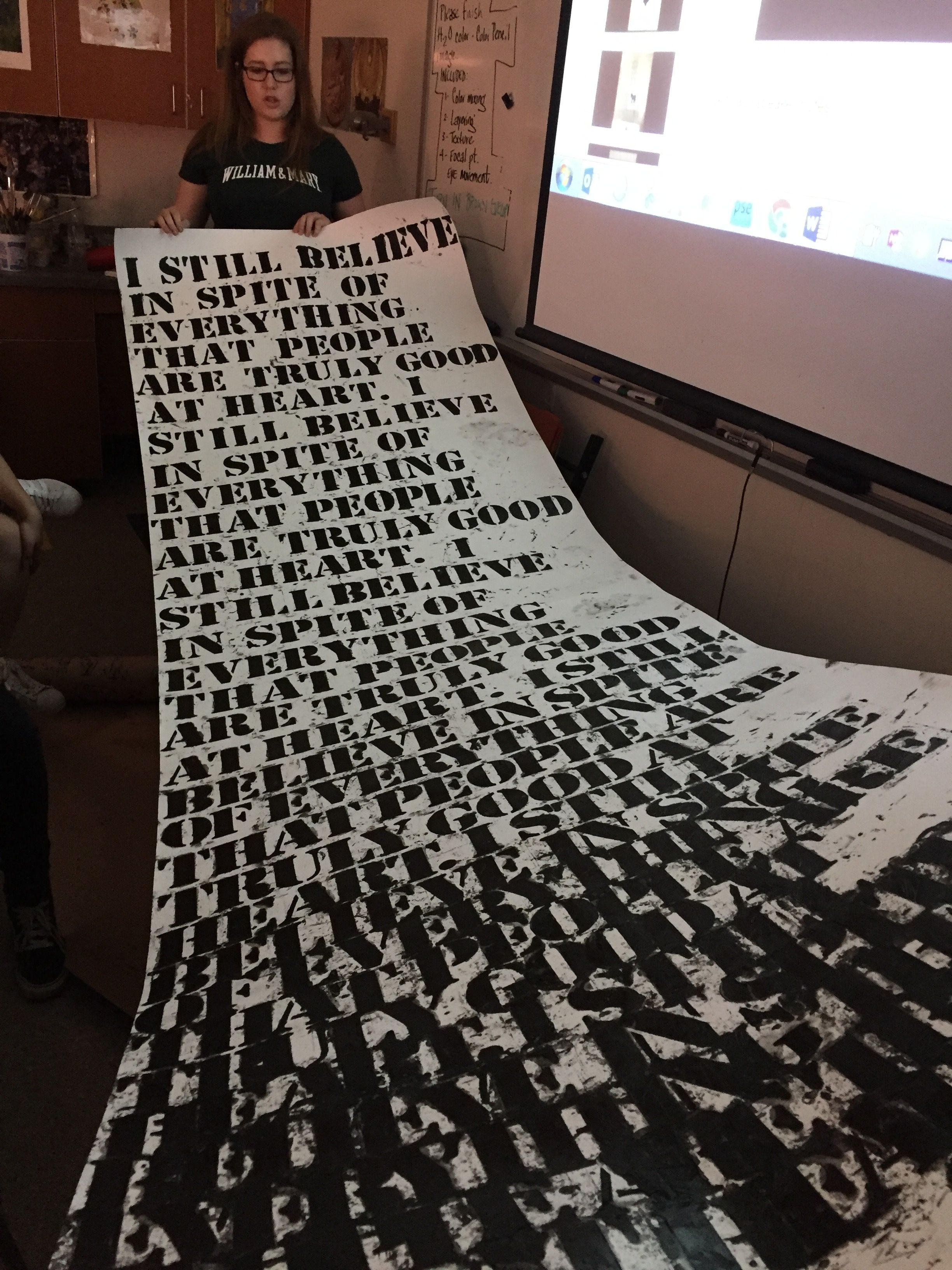
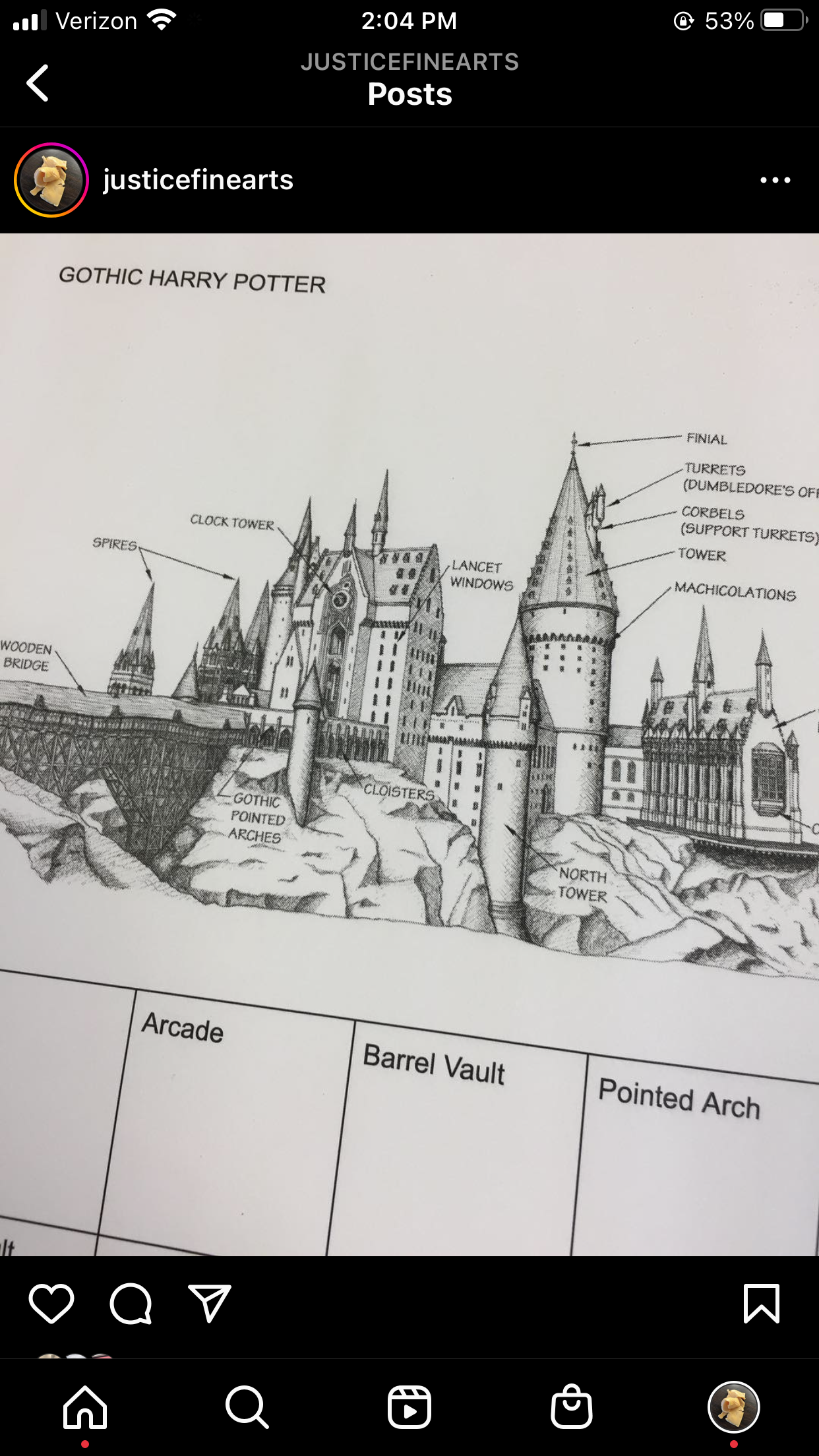


GG, AP Drawing
GG, AP Drawing
Ian, AP Drawing
Ian, AP Drawing
No Ur Not, Kris, Art 1
No Ur Not, Kris, Art 1
Work Samples
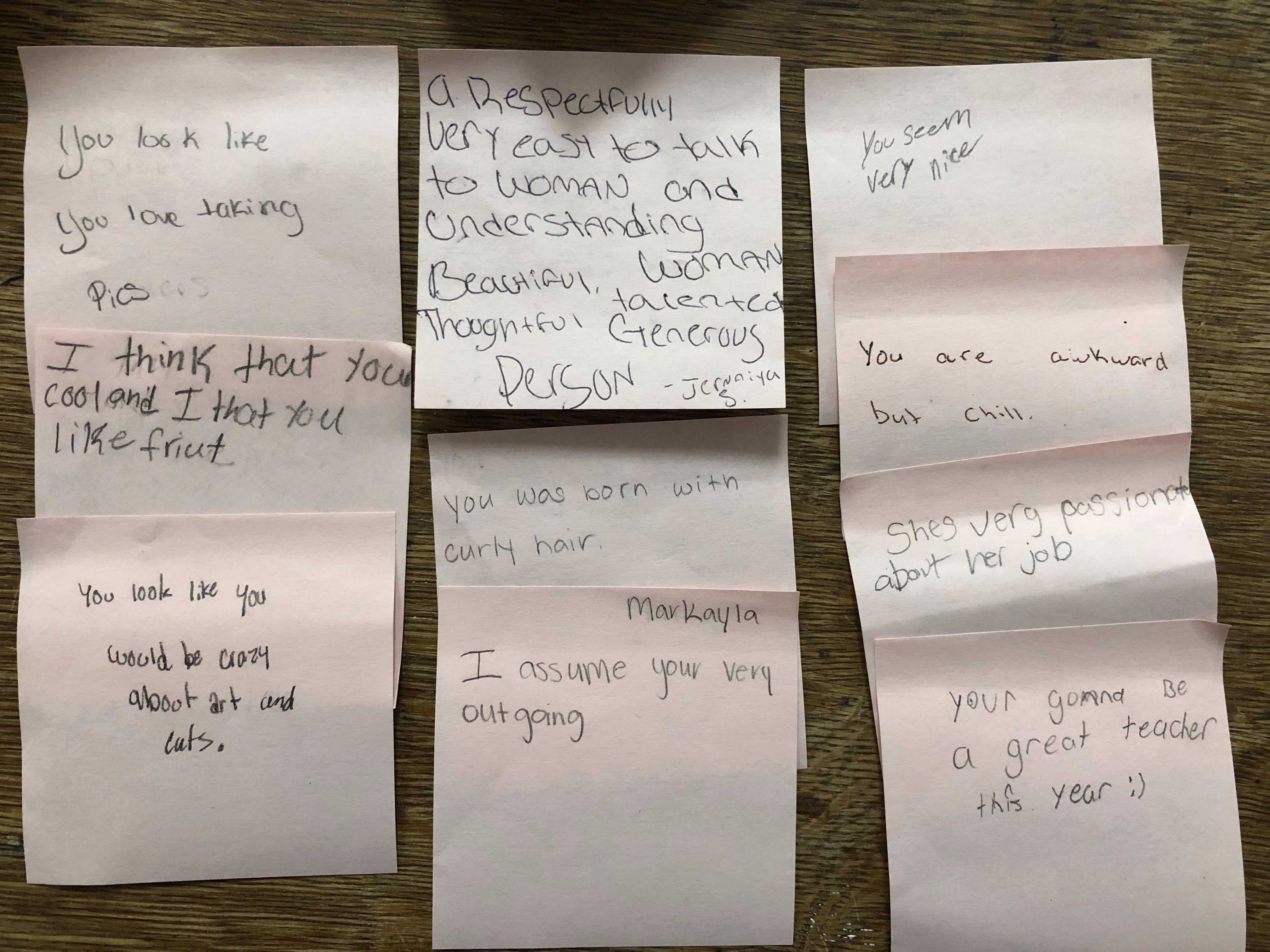
ICA Project Proposal
Rebecca Field, AP Art History Teacher
Freeman High School
The Advanced Placement Art History curriculum is fascinating to me, the teacher. Often however, it is hard for my students to see how the learning that they do in class relates to the immediate world that they see around them. This year, my students have a tremendous opportunity to connect their own lives to the study of an 800-year-old French cathedral and learn from the new VCU Institute for Contemporary Art before it is even built. The planning, construction, and building of an important piece of architecture in Richmond, VA, will serve as a unique experience for these teenagers. They will be allowed to witness the creation of a local and internationally important addition to contemporary design in their own neighborhood.
This project will allow AP Art History students to study both Gothic Architecture and the building of Virginia Commonwealth University’s Institute for Contemporary Art in tandem. Students will be researching and comparing several aspects of the building and design process including the functional, financial, and Ideological. Students will complete the following:
-study terms and definitions of Gothic architecture, the development of the Pilgrimage system in Romanesque-era Europe, The structure and influence of the Medieval Catholic Church, Sacred Geometry and the construction of cathedrals, and Medieval scholasticism and how it affected art and architecture made during the Gothic era. This learning directly fulfills the curriculum of the AP curriculum.
- discuss the building process of Chartres Cathedral, in France, with Dr. Craig Reynolds, VCU Adjunct Professor of Art History and Curator of the Branch Museum.
-learn about the ICA building process by meeting with Jaime Baird, the Director of Administration and Johanna Plummer, the Director of Education at the Institute for Contemporary Art
-study the plans and drawings of the ICA building, interview donors/patrons who are funding the project, research the architect and interpret all of this information to find out how the physical space of the ICA interacts with the ideological and metaphoric contents of the design.
-compare 21st century Richmond and 12th century Chartres to find out how these 2 buildings effect the local economy and other community concerns of the towns in which the ICA and Chartres Cathedral are built.
-present research findings in a symposium-type setting that will give students the opportunity to understand how art history research is presented at college and professional levels.
I hope that this project will continue for several years as the ICA building progresses and my students will eventually be able to study how the public interacts with the space. Because of this partnership with VCU, I anticipate sharing this unit of study as an example of the possibilities of dialogue and relationship-building between the University and the public schools located nearby. It also serves as a model for how teachers and students can utilize local resources in the pursuit of creating exciting learning opportunities in an environment of standard-based structures.
I taught Advanced Placement Art History for 15 years. During this time, my ideas about teaching and learning global art changed profoundly. My study of race and visual culture with Dr. Gloria Wilson led to my complete reworking of the AP curriculum.
The project included below asked students to critique the VMFA Congo Mask Exhibit after researching information about the exhibit. Students were surprised and dismayed to learn that the chief curator of the exhibit hailed from Belgium, a country that once controlled and decimated the Congo people.
VMFA Critical Review
AP Art History Assignment
Critical Review of the VMFA exhibit “Congo Masks”
Knowing what you have learned about the study of African art and our discussions , write a critical review of the VMFA exhibit “Congo Masks”. Visit the museum and spend a LONG TIME in the gallery.
In essay form, write a critical review of the exhibition and include the following:
How has the flow of the exhibition been crafted to compliment the art- look at the overall set up- it is Geographical? Chronological? Thematic? What is your opinion of the way the exhibition has been organized? Why do you think the curator organized it this way?
Watch the visitors/viewers for a while (not in a creepy way). How much time do they spend looking at each work? Do they stop at specific artworks more than others (as a pattern)? DO they look at the signage more than the artwork? Draw a map so you can notice these patterns. Do they follow the same path as they go through the exhibit? What kind of visitors are there during your time there? Age? Race? Gender? Can you generalize? Why might this be important information to the museum?
Look at the design of the gallery spaces- examine the color of the wall, the lighting, space between artwork, methods of display and describe it. Does it work well with the art on display?
Examine didactics, other materials- photographs, timelines, maps…
What do you think about them? Is there too much, not enough, or just the right amount of information? Has information been left out? Is the information written in a neutral way? Do you think the authors of the signage were thinking about the indigenous people or the colonial point of view when the background information was written? How can you tell?
Are there movies or sound? Does the exhibit address the function of the object in the exhibition? If so, how? Remember that each of the objects on display were used in ceremonies and performances. Its this clear in the exhibit? If not, how would you address function if you were the curator?
What is the overall narrative of the exhibition?
Has there been an effort to make indigenous people the focus of this collection of art? If not, how would YOU change the exhibit?
Overview of the entire Africa Project
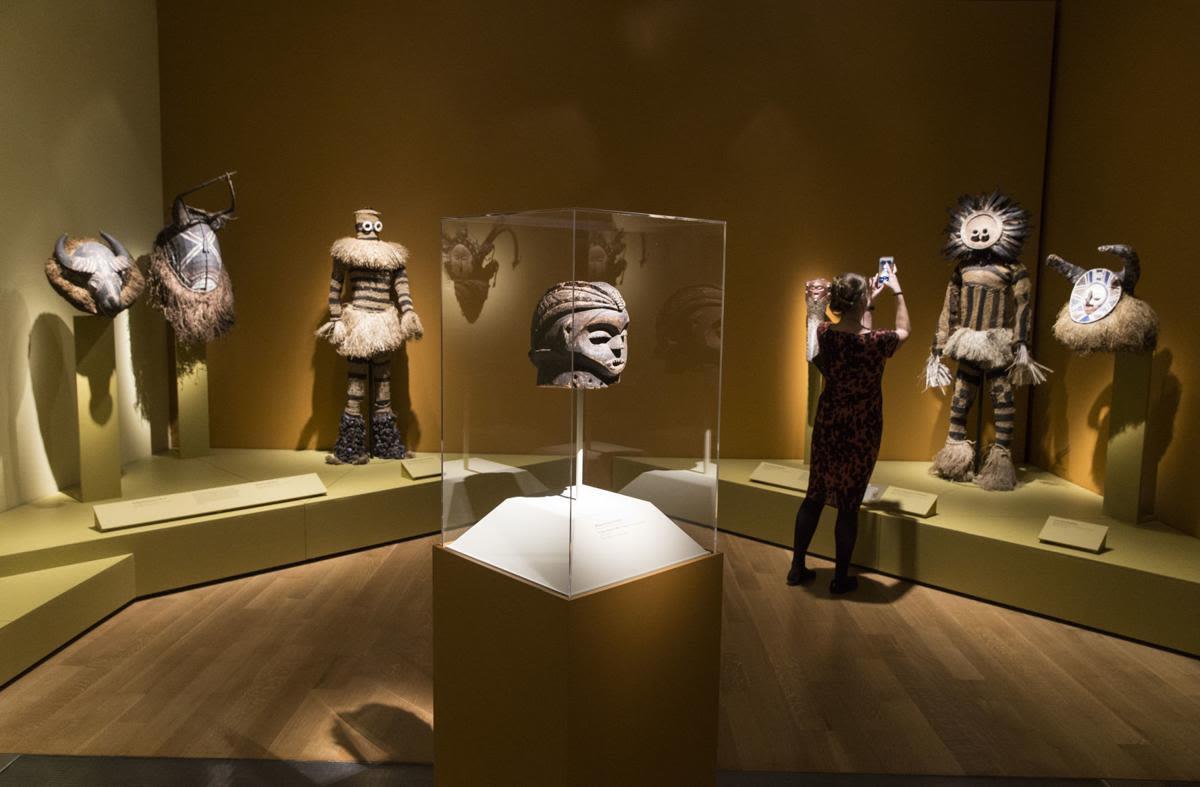


Student Work
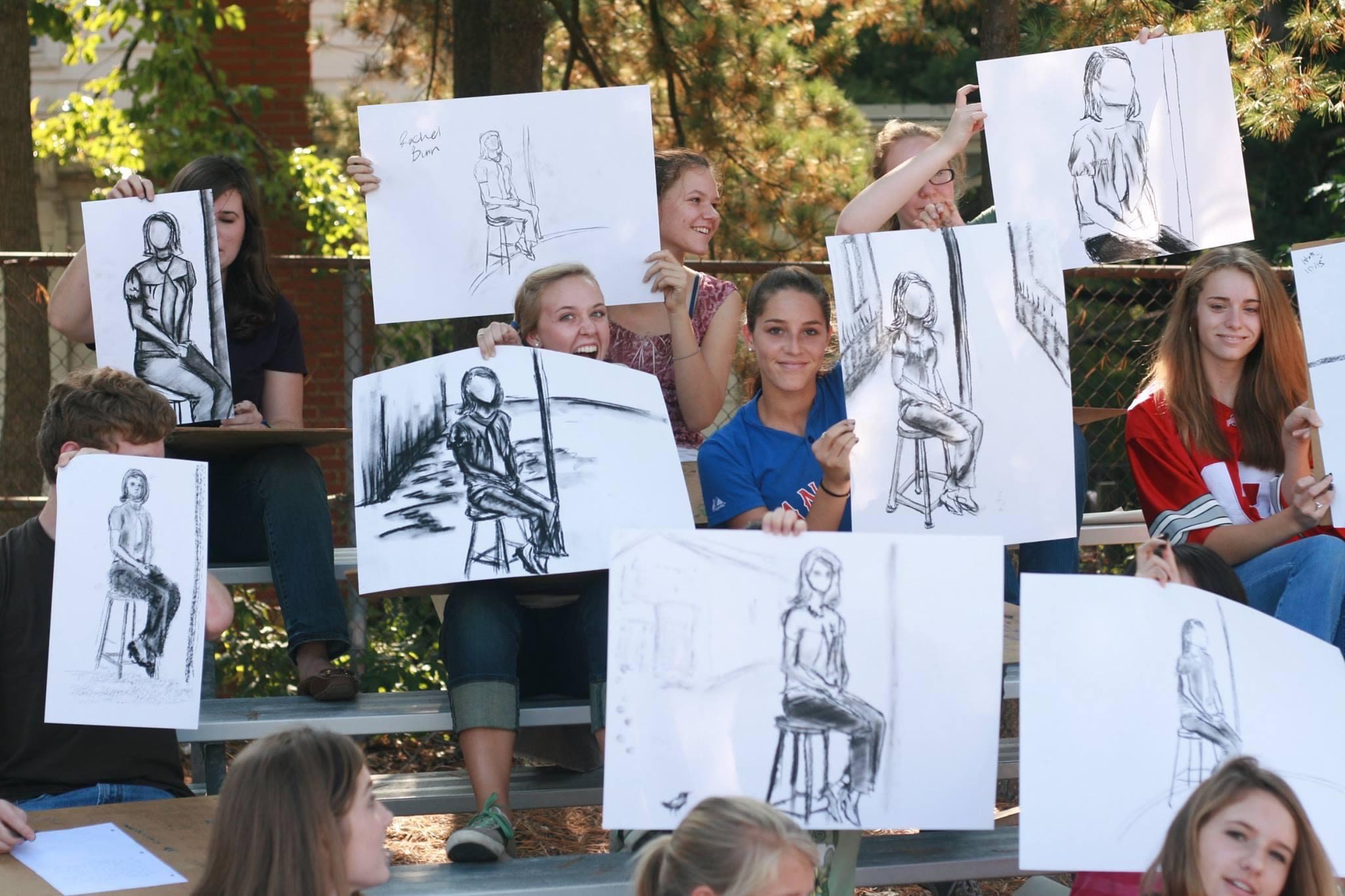
Que, Idenity Portrait, Art 3
Que, Idenity Portrait, Art 3
Latoria, Pathway, AP 2D
Latoria, Pathway, AP 2D
Alexis, Line Drawing, Art 1
Alexis, Line Drawing, Art 1
Hailey, Rapunzel, Art 3
Hailey, Rapunzel, Art 3
Cen, Identity Self-Portrait, Art 1
Cen, Identity Self-Portrait, Art 1
Caroline, Master-Pieces, Art 4
Caroline, Master-Pieces, Art 4
Bronwin, Age of Discord, Art 3
Bronwin, Age of Discord, Art 3
Anna, Islamic Tile Design, AP Art History
Anna, Islamic Tile Design, AP Art History
Ellie, Photo Environment Project, Art 3
Ellie, Photo Environment Project, Art 3
Sakura, Identity Self-Portrait, Art 4
Sakura, Identity Self-Portrait, Art 4
Emma, Symmetrical Circus, Art 1
Emma, Symmetrical Circus, Art 1
Andy, Shape of Me, Art 1
Andy, Shape of Me, Art 1
Multiple Art One Artists, Line Sculptures
Multiple Art One Artists, Line Sculptures
Art 2, Climate Stories, Collaborative
Art 2, Climate Stories, Collaborative
Hopper, Ghostly Figure, Art 1
Hopper, Ghostly Figure, Art 1
Xavier, Afro Futurist School, Art 1
Xavier, Afro Futurist School, Art 1
Typography Design, Josh, Art 3
Typography Design, Josh, Art 3
Destiny, Red Lined Richmond, Art 4
Destiny, Red Lined Richmond, Art 4
Personal Work
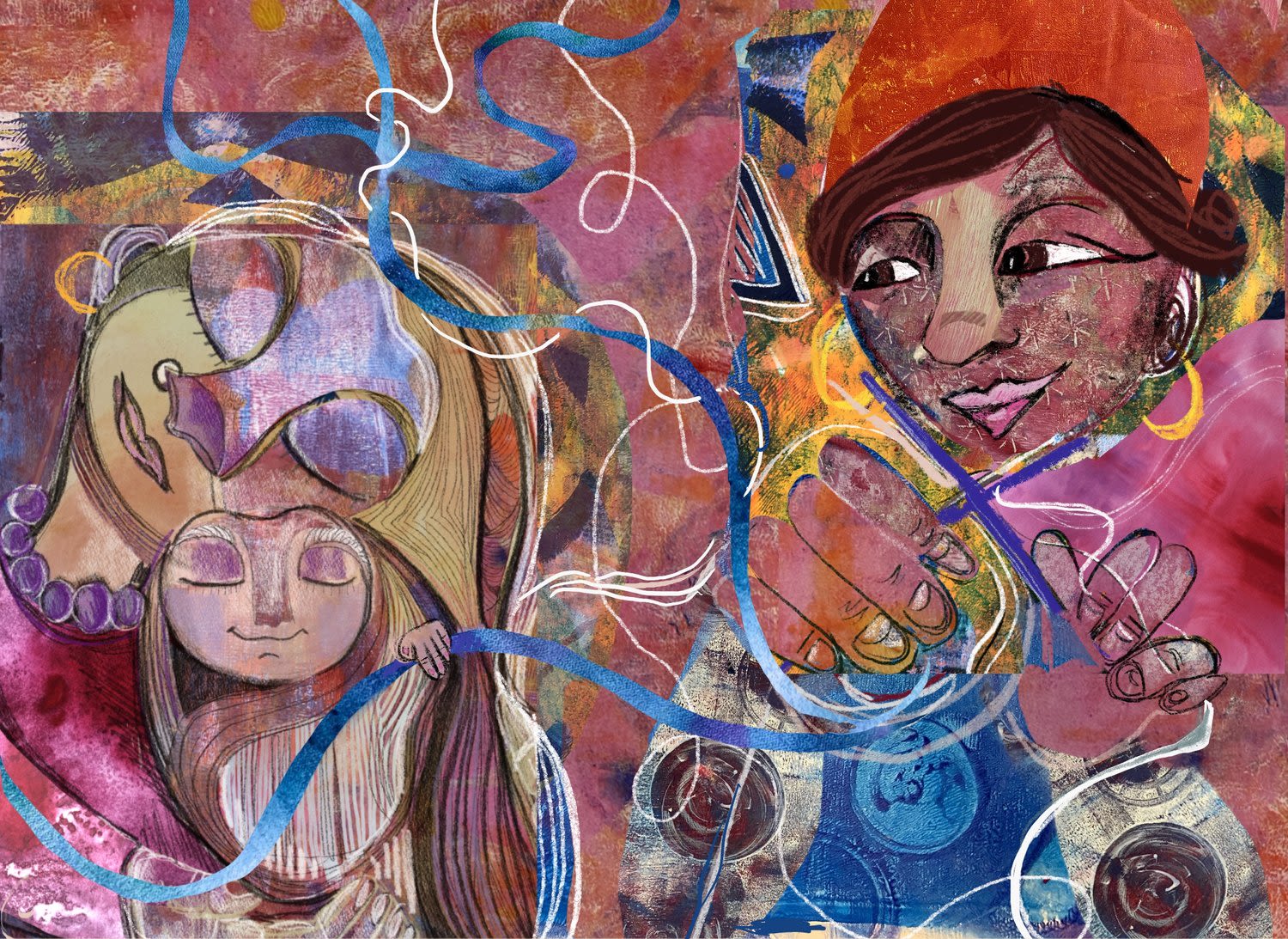
Rebecca Field Illustration
Outside of the classroom, I am an illustrator, pursuing publishing in the children's book market. My work reflects my love of storytelling. Click on the link above to view my porfolio.
Classroom Instagram
@justicefinearts is my main form of communication with students, families, and the community. I regularly showcase student work, and art news from the world around us.
Essays about Education
I write about educational justice, art access, and my job here.
